- Details
- Written by: Gianna Esquivel
- Hits: 2382
Guys, we have been driving across a beautiful area in western Romania where there are several National Parks. To drive in such an environment is very nice if you like nature. The problem was that we got very excited yesterday exploring nature trails and missed searching for a place to stay. Already very late, we built the tent somewhere in the darkness haha. Yesterday night, it looked like an ok spot. This morning, our mistakes in choosing it were very clear hahaha, we were in the forest. It was a bit steep and rocky. To sleep and wake up today was not easy at all! But a new day was ahead so we saw each other and screamed “are we brave or coward?”. We concluded we are brave but in severe need of a coffee!
We stopped in Bozovici, Romania. When we located it on the map, it looked promising. Everything is green around! It’s very close to the Cheile Nerei-Beușnița National Park. But when we arrived, the town was not very attractive. It was dusty, many pedestrian zones were broken, and the tourist information office was closed but it looked like nobody has been there a long time ago. We thought we needed more than a coffee, to change the route immediately to find something interesting and to boost our mood.
Suddenly, we saw a local, small coffee shop. We opened the door and a Romanian lady immediately said “niu serviciu”. We (Martin and I) saw each other and laughed. We looked like zombies and we scared the lady hahaha. We didn't have the most comfortable night. Anyway, I used the translator to explain we were tourists only looking for a coffee. She asked about our nationality. We answered “Mexican and Bulgarian”, hoping our countries were not banned from her coffee shop hahaha.
Fortunately, she smiled and pointed to a table for us to wait for the coffee. It seems this town was a must-stop for tourists to get into the National Park or at least to visit the waterfall. Now, most people skip it and go directly to the attractions. The lady turned out to be kind, only nervous about the presence of strangers. Using the phone translator, she strongly recommended keeping the same direction not to miss the Bigar waterfall (Bigăr cascadă). The coffee was a good one! She was kind so we followed her advice.

Where is the Bigar waterfall (Bigăr cascadă)?
The Bigar Waterfall is located in the west part of Romania, in Caras-Severin County. Your GPS will show it easily. Being in Bozovici, we were only 10 or 12 kilometers away from the waterfall. The road is in good condition. And there’s a comfortable and free parking area. Based on the direction you drive, it can be a bit after or before the waterfall. Then, you have to walk a short distance to the waterfall, and there you will find some souvenir sellers and at least a couple of food stands (during Spring or Summer only).
Here you have a driving instruction from Bozovici to Bigar waterfall with car with Google Maps.
| Follow PackAndGo.info at: | |
| YouTube | @packandgo. |
| @packandgo.info | |
| X | @packandgoinfo |
| Bluesky | @packandgo.bsky.social |
| @packandgo.info | |
| TikTok | @packandgo.info |
Why is the Bigar waterfall famous? - Description.
Here we will give you an objective description of the waterfall and then, our personal opinion. Bigar waterfall is mostly a big rock bell-shaped, totally covered with moss. The moss looks like a green carpet and over it flows a spring of groundwater. Due to this shape, the water falls in many sorts of strings, creating a special effect not very common in most of the waterfalls we have seen. It’s not the typical string of water falling with power from a great high. This waterfall is an exotic bell-shaped rock around 8 meters high.
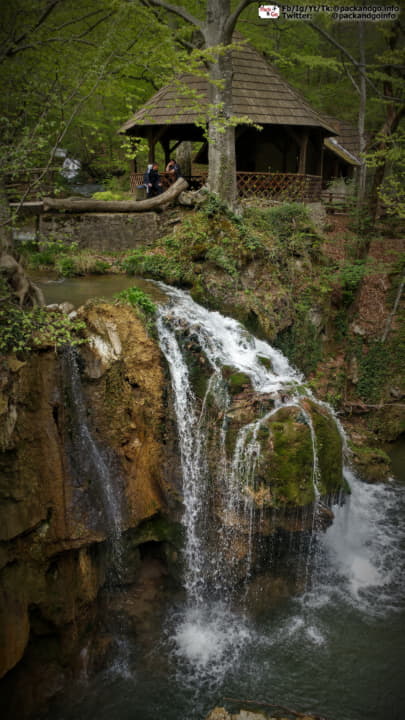
The waterfall is very famous but honestly, it was not stunning for us. It’s a beautiful nature spot but we understood that the waterfall is famous not because of its impressive amount of water or height. Its fame came due to its uncommon bell shape. If you check on the Internet, you will find that Bigar waterfall is ranked number one on a list of unique waterfalls in the world. So you easily can create wrong expectations. As I said, once in place, the Bigar waterfall is beautiful but not so stunning. Its shape and the way it spreads the water in different water threads around the rock make it a different waterfall, an exotic one. Besides, it’s exactly located on the 45th north parallel, at a halfway point between the North Pole and the Equator.
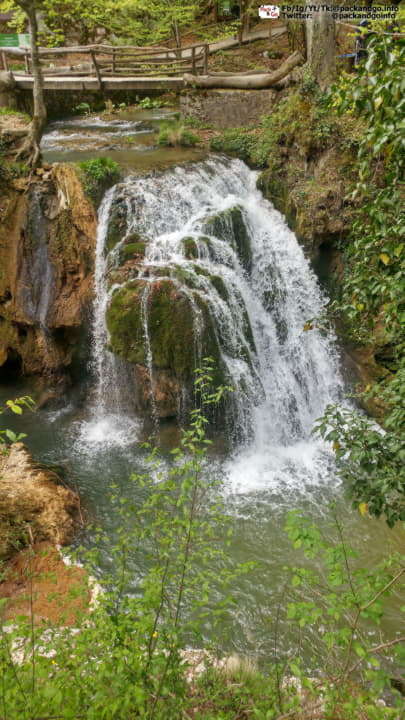
And the waterfall is the result of a bigger nature treasure, the Bigar spring that is fed by the groundwater running through the Bigar cave in the Anina Mountains. This spring flows at a certain point, into the Minis River. The whole has been a protected Romanian area since 2000 (176 hectares in total).
If you like exploring, you can go further to see more of the Bigar spring and the entrance to the cave. Access to the cave is forbidden but you can get a cool pic, after a short climb, at its entrance. The risk is you can get enchanted by the forest and its treasures so you will feel like exploring the complete Cheile Nerei-Beușnița National Park. And it’s not a bad idea at all!
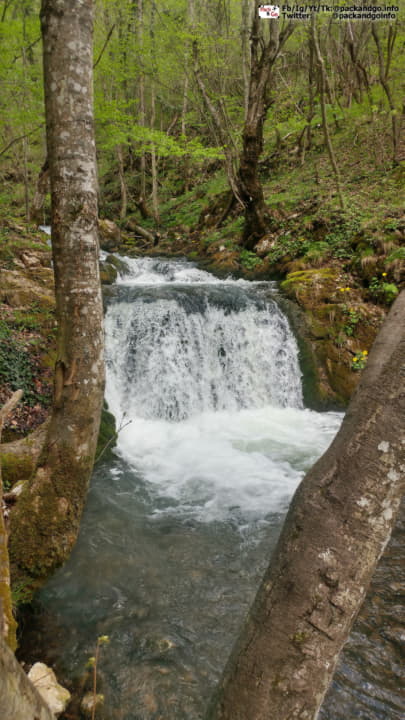
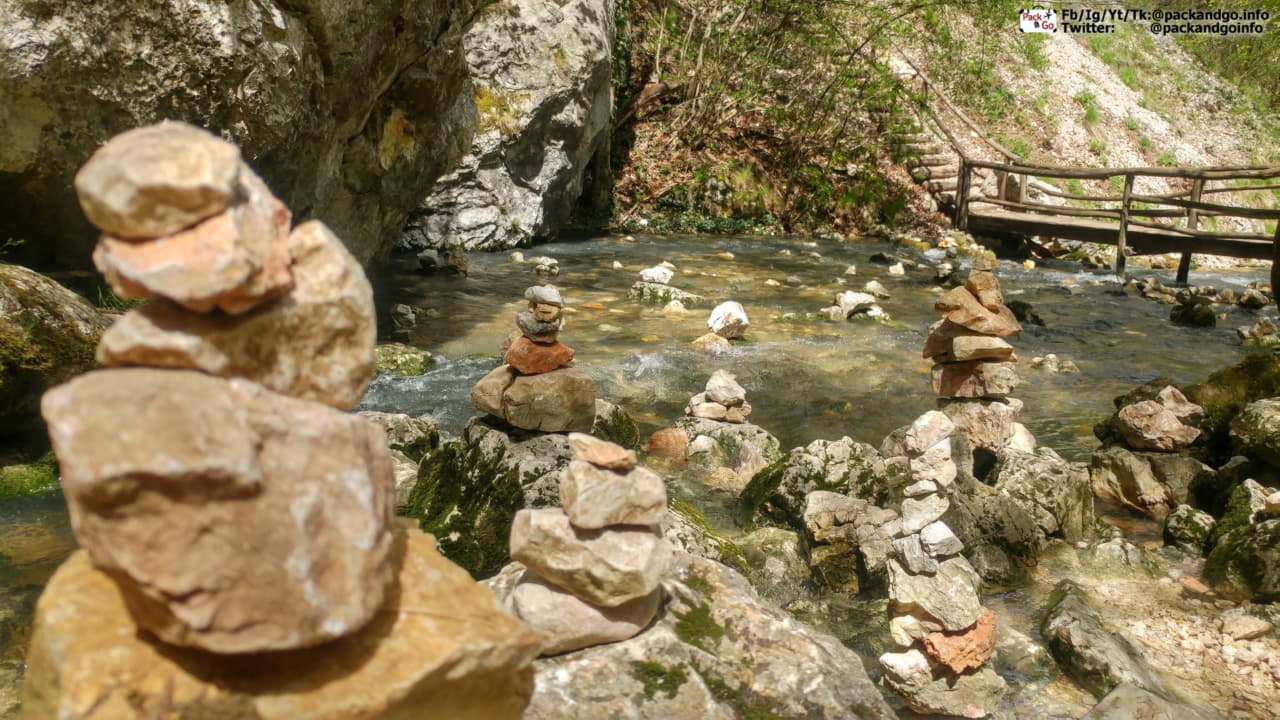
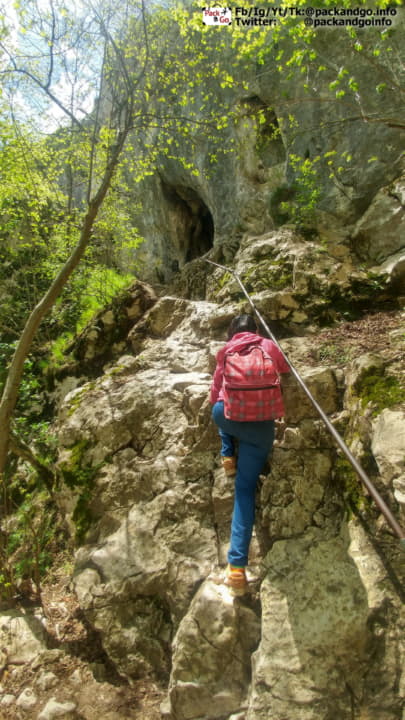
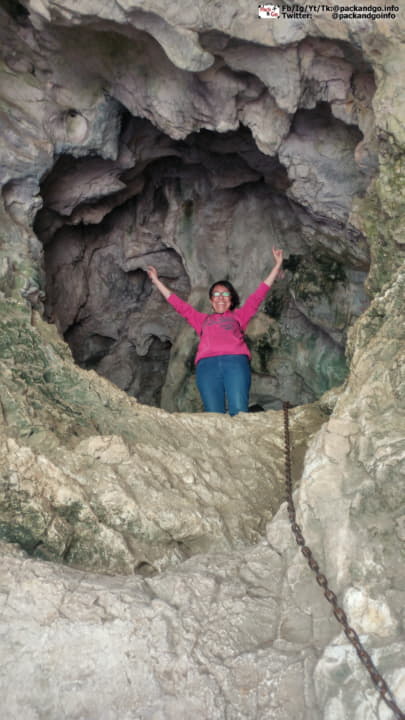
How did the Bigar waterfall form?
The Bigar waterfall it’s a natural creation. It’s the result of the calcium carbonate deposits generated by the water of the Bigar spring. With time, they get covered by moss and the calcium petrifies it (the moss). Travertine is created during this process. New layers of moss appear constantly so the size of the surface gets bigger and bigger through time.
Is it true that the Bigar waterfall collapsed?
Yes, it is true. On June, 2021, the company in charge of the forest management reported that a 4-meter wall of the Romanian Bigar waterfall collapsed. The reasons for its fall were natural. As we already mentioned, this type of waterfall is constantly growing due to the calcium carbonate deposits that get covered by different layers of moss. It seems the Bigar waterfall reached such dimensions that its weight made the wall collapse.
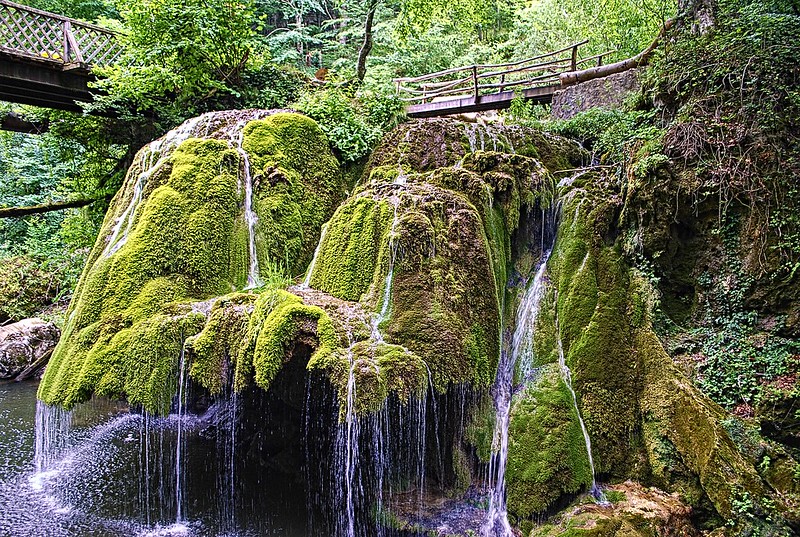
Experts said the waterfall will regenerate and grow again. It’s only a matter of time. But the cycle will involve collapsing of the travertine too. Light or dramatic collapsing, who knows, but it will happen.
Maybe we were just not lucky this time. This was our first encounter with the Bigar waterfall (Bigăr cascadă) and the previous collapse happened just last year. It can be the reason for us not to be stunned by it.
Visiting hours and entrance fee to the Bigar waterfall.
There’s no entrance fee to visit the Bigar waterfall and you can take a look at it, at any time. It’s not in a closed area. It’s nearby the road. So you have to pass through there, park your car and walk a bit to find it.
Conclusion.
It was nice to visit the exotic Bigar waterfall! It was not as stunning as it’s promoted, but it gave us the boost we needed to continue exploring Romania. Consider this waterfall is the tip of an iceberg, meaning it’s only one proof of all the natural beauties the Cheile Nerei-Beușnița National Park has in store for you. In any case, if you don’t want to miss this natural beauty don’t waste time. Beautiful things can collapse so better pack and go!
Our next stop is going to be Timisoara, Romania and then we will go to Hungary, so follow us on:
| Follow PackAndGo.info at: | |
| YouTube | @packandgo. |
| @packandgo.info | |
| X | @packandgoinfo |
| Bluesky | @packandgo.bsky.social |
| @packandgo.info | |
| TikTok | @packandgo.info |
Check out our previous stops too:
They are all in a reachable distance by car, from Bigar (Romania), so you can also visit them.
- Details
- Written by: Gianna Esquivel
- Hits: 5801
Hi everybody! Guess where we are now? Haha, we got absolutely inspired by Bulgaria. So this morning, without planning so much, we just took the bridge that connects Bulgaria (Vidin) to Romania (Calafat) and we crossed it! We are in Romania, guys!
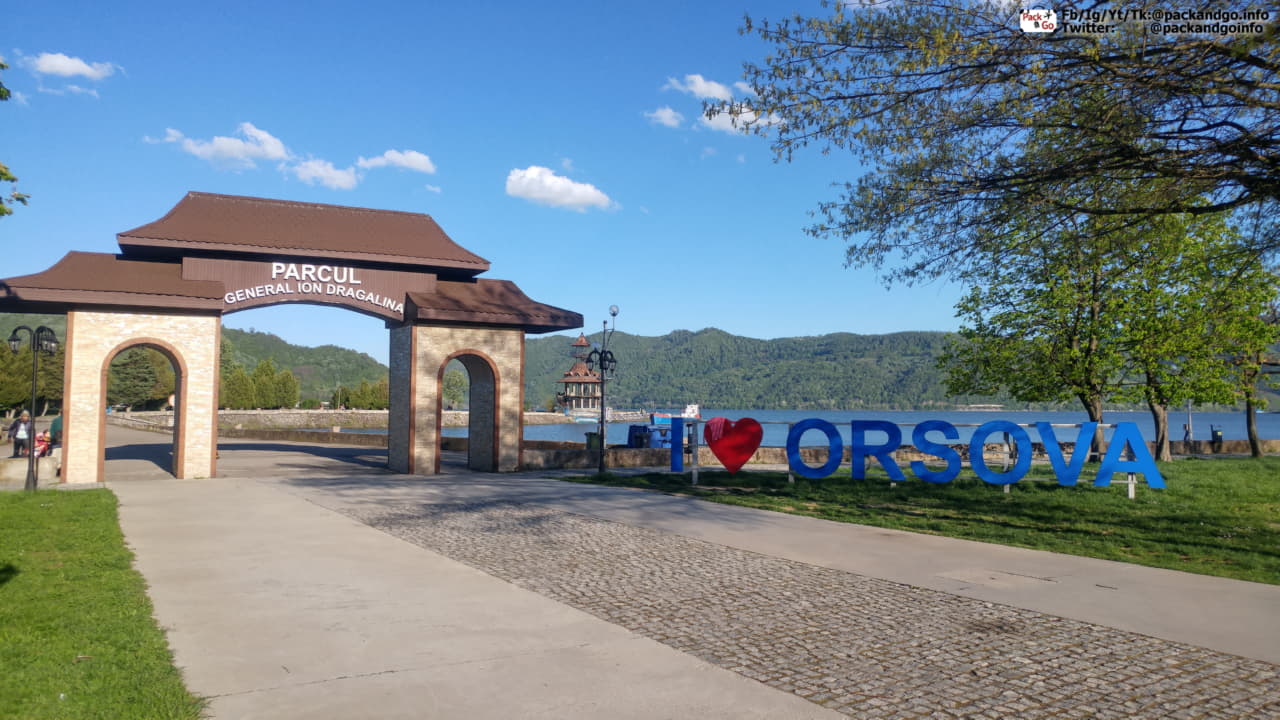
A great day was kicked off by an error.
We decided to keep following the great Danube. It’s massive and beautiful, a good reference not to get lost! Besides, we saw on the Internet some pics of a very scenic place called “The Iron Gates”. We got very curious, especially about a picture that showed the head of a bearded man carved on a big rock in the Danube. The images were great. We checked the location based on the website information, and we realized we were approximately two and a half hours from there. So we set the place on the GPS and we drove in that direction. To find that head became our main goal today!
Driving along the Danube was a great decision. The views are amazing! But after two hours of driving, we started looking for the head on the rocks, and there was nothing. We kept going until we finally saw a sign mentioning “The Iron Gates”. We drove a bit more and we saw the area. Guys, the Danube is massive and you have to see it with your own eyes!
From the place where we parked, we saw Serbia on the opposite bank of the river. We were happy with the view, but still, there was no head around. We didn’t quit! We kept driving even though we had a feeling that something was wrong. There was nobody around, so no chance to ask, then we kept driving. Suddenly, the police stopped us. It was hard to communicate. We didn’t have a common language. But after some minutes of nerves, we got it. We were really close, only a few meters, to cross to Serbia through a forbidden place. Fortunately, we managed to explain why we were there. The police (and we) relaxed. We sweated, guys! Then, mostly through signs, they showed us the error. We were looking for the head in the wrong place. “The Iron Gates” were in front of us (the south part). But the head lives somewhere around a Romanian place called Orsova (Orșova). We were approximately 13 to 15 kilometers away from it.
We got the wrong information on the website we checked, but we didn’t double-check. Usually, we do it. Anyway, we got excited about traveling and we forgot this very basic rule.
What is “The Iron Gates”?
“The Iron Gates” is a gorge on the Danube. It’s located on the border between Romania and Serbia. There are two hydroelectric power stations in this gorge, Iron Gate I, considered the largest Danube dam, and Iron Gate II. They were the result of a joint venture between the Yugoslavian and Romanian governments that started in 1964. The project was completed in 1972. If you like to see giant human constructions, you can look at these big dams. This is the first we saw because we were driving from Vidin, Bulgaria, to the Iron Gates.

Exactly there, the river divides the northwestern foothills of the Balkan Mountains from the southern Carpathian Mountains. As you can see now, the gorge is shared by two countries. On the Serbian side of the gorge, you will find the Derdap National Park, which is a natural protected area. But if you are, like us, in Romania, this side of the gorge is the Iron Gates Natural Park (Parcul Natural Porțile de Fier, in Romanian).
It’s a big park, guys! 18 protected areas are included within it. Vegetation is dense, and at least 205 types of birds and 34 mammal species live there. It’s pointed out as the second largest in Romania. It’s a great natural area. Take your map and check these references: it goes from Socol (west) to Drobeta-Turnu Severin (east), and the Mehedinti Mountains and Banat Mountains (north). Impressive, right?
One note for you to consider. We didn’t see public transportation in this area. Buses were heading directly to Orșova and the towns around. The rest of the vehicles were big trucks coming and going between Romania and Serbia, and regular cars. If there’s an alternative we missed, share it with us!
| Follow PackAndGo.info at: | |
| YouTube | @packandgo. |
| @packandgo.info | |
| X | @packandgoinfo |
| @packandgo.info | |
| Bluesky | @packandgo.bsky.social |
| TikTok | @packandgo.info |
Where is Orsova (Orșova) and how to get to Orsova?
Orșova is a Romanian port city, located on the Danube River. Coming from the South, as we were driving, Orșova is above “The Iron Gates”. There, the Danube meets the Cerna River. And based on our recent experience, this city is a very nice spot to relax and the most recommended starting point to explore the different gorges and nature around.
Distance and time references based on Google Maps:
- Craiova (Romania) to Orsova, 143 km (shortest route), 2 hours driving.
- Timisoara (Romania) to Orsova, 204 km (shortest route), 3 hours driving.
- Vidin (Bulgaria) to Orsova, 240 km (shortest route), 4 hours driving.
- Belgrade (Serbia) to Orsova, 239 km (shortest route), 4 hours driving.
- Bucharest (Romania) to Orsova, 380 km (shortest route), 5 hours driving.
How to move around Orșova?
Once you arrive in Orșova, either by bus or car, you can easily walk around the city. It’s not hard and it’s pleasant. Of course, there’s public transportation, and you can see mostly locals using it. But honestly, for tourists, the most interesting area to explore is not massive, and it’s not hard to walk in. It’s up to you.
Now, talking about all the different things you can see in Orșova’s surroundings, there are two ways to see them. You can take a boat there or you can drive your car. Going by boat, you will be closer to some things like the big and small Kazan gorges, Trajan’s plaque, the Face of Decebalus, Mraconia monastery, Veteran grotto, Ponicova cave, and Széchenyi memorial plaque. The others are big enough so you can see them well from the road if you go by car. It’s just about deciding the point of view you want to enjoy.
In Orșova, you will easily find the pier where you can take a boat. Prices depend on the route you pick (how long the trip is). Therefore, the number of attractions you will see.
The boat trip can be long, around 15 to 20 kilometers. By car, you will drive a long distance to visit the attractions. We saw that boats leave with a minimum number of people. If there are fewer people, you will have to wait for the minimum to be covered, and that can take minutes or hours, based on the season you go in. Drivers will offer to pay a higher fee if you want to leave immediately. Considering these factors, the fee per person can go from 15 to 70 RON. Prices are shown on the pier. Be careful with fake promotions that turn out to be more expensive.
In our case, when we looked for a boat, the pier was already closed. We were told they closed earlier than usual because there weren’t many tourists. So we explored by driving and we reached everything. The next day, only to experience the Danube and to pass through the gorges by water, we took a short boat trip. We liked it!
What to do in Orșova?
Orșova is ancient and full of history. It seemed to us a quiet and nice city to relax in. Most sites on the Internet consider it only as a starting point to enjoy the surroundings, but barely talk about Orșova itself.
In our opinion, Orșova can be a nice stop for a day trip or for relaxing for a complete weekend. You can easily spend a day here and explore the surroundings, the very next day, or vice versa. There’s accommodation available in the city and it’s cheaper than the one you can get in the surroundings (along the Danube). The city has a quiet vibe that, for sure, gets a bit more vibrant and noisy during the high season.
The attractions in the city that we enjoyed the most were the promenade and the park.
Subscribe to our YouTube channel!
Orsova’s promenade.
The great Danube is a big icon of Orsova. The presence of the river is massive and a big part of the city’s landscape. When we arrived, the first thing we found was a long and nice promenade. It’s wide enough to have a nice walk while enjoying the Danube view. There you will find the pier and all the information we already mentioned about routes, attractions, and prices. There are restaurants on the way so you can make some stops to eat Romanian food, and get a coffee, or ice cream.
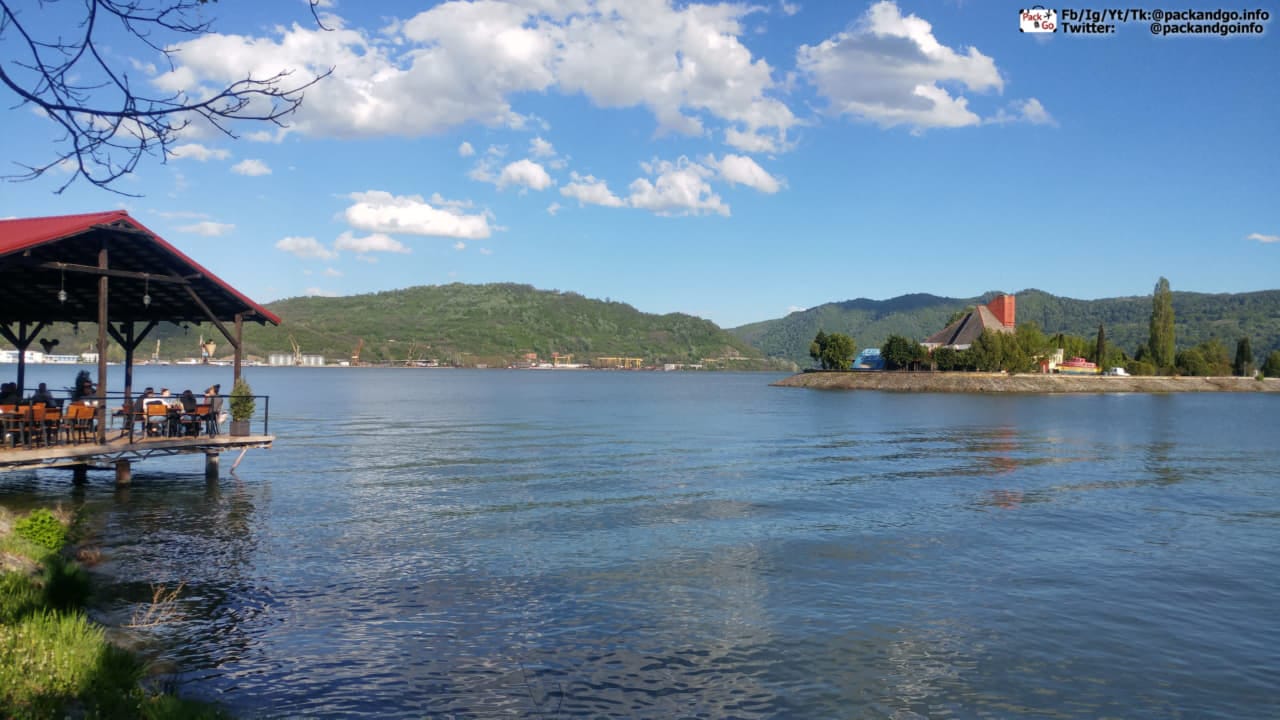
Orsova’s park.
Being a city, of course, asphalt, buildings, houses, and shops are present in Orsova. But the city has a green and very pleasant side. Walking on the promenade naturally leads you to the park. There you can see statues, playgrounds, rental bicycles, nice spots to enjoy different views of the Danube, and long and nice areas for walking or exercising. It’s very relaxing and quiet. After having ice cream, we took a nap on the green, fresh grass of this park. There you will find the big and colorful sign of Orsova to take a postcard picture.
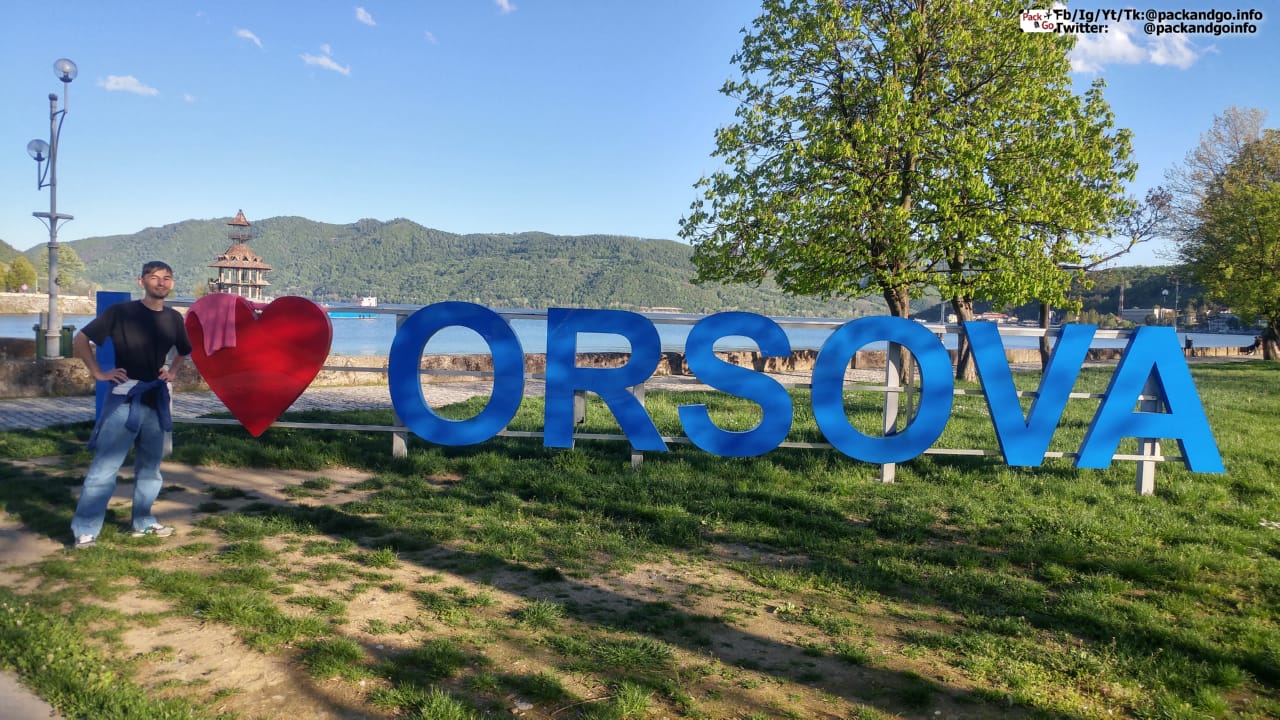
What to see in Orșova's surroundings?
The list is as long as the Danube!
Tabula Traiana or Trajan’s Plaque
It’s a relic, a memorial plaque built in a river gorge. The Roman Emperor Trajan ordered its construction. Emperor Trajan was an enemy of King Decebalus. The Tabula Traiana or Trajan’s Plaque was important to commemorate different events. The march of the Roman troops to Dacia. The Roman Empire’s victory over the Dacian kingdom after the Second Daco-Roman War (105-106). And the end of a Roman military road (2nd century). Approximately 40 kilometers of road remains are still visible along the river (holes in the rocks used to place beams for fixing a wooden bridge).
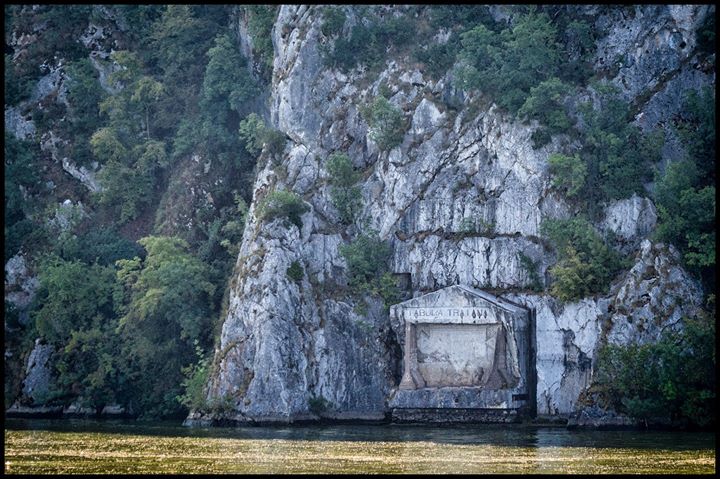
We were told that ten plaques were carved in this gorge, but only Trajan’s was preserved. Drawings of the other four plaques exist, and they date back to the 18th and 19th centuries. Tabula Traiana or Trajan’s Plaque is 1.75 meters (height) by 4 meters (length). The plaque is fixed on a rock, and you will see two dolphins, an eagle, and an inscription.
As you can imagine, weather conditions have badly affected the plaque over time.
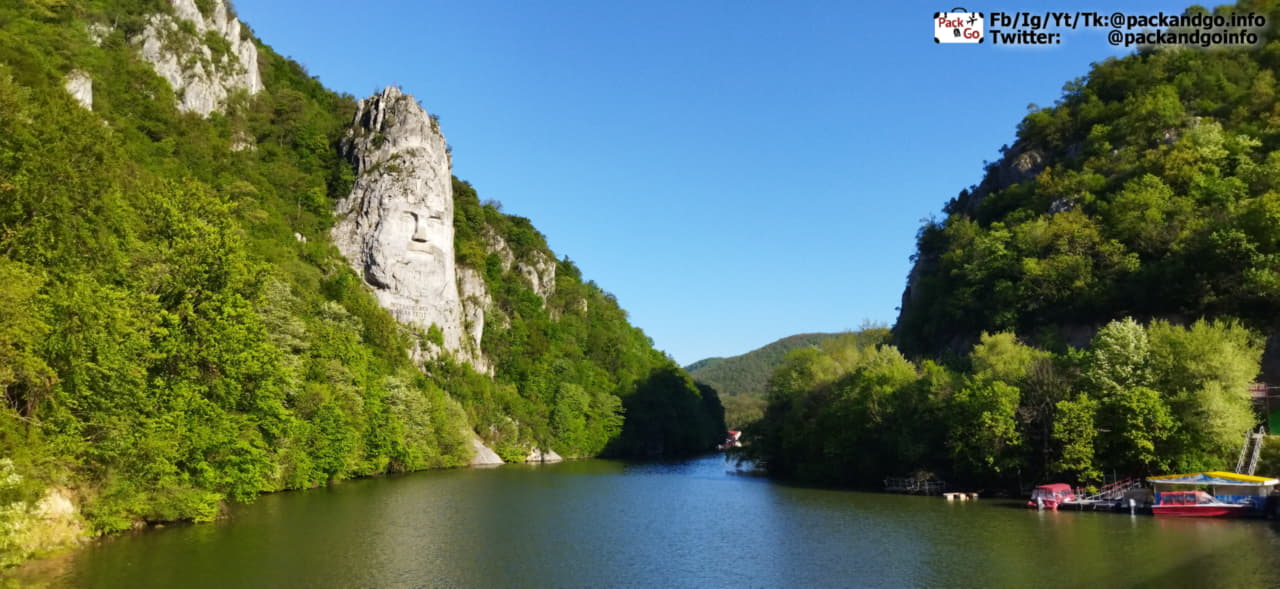
Chipuil Lui Decebal or the Face of Decebalus
Yes, guys! We got it! Finally, we managed to reach our original goal, and it felt very nice. The head is impressive, just like the landscape that frames it. The view can’t be better, the Danube plus the Carpathian Mountains, and the carved face on the rock of Decebalus.
The creation of the head was Iosif Constantin Dragan’s idea. He directly financed it, and Florin Cotarcea was the artist who made it. It’s 25 meters wide and 40.5 meters high, and it’s located close to the Mraconia Bay, 18 kilometers away from Orșova. Check your map, and it’s between Eșelnița and Dubova. Something we discovered is that the head is not ancient like other historical treasures in the area. Its construction started in 1994 and it was finished in 2004. Yes, Florin Cotarcea worked 10 years directing the carving with the assistance of at least a dozen climbers and a ton of dynamite for modeling. Under the head, you will see this inscription: “Decebalus
Rex – Dragan done” (king Decebalus – made by Dragan).
Decebalus was the last king of Dacia. He defended the independence of his country (the current territory of Romania) from Trajan and Domitian, both Roman emperors.
Guys, we looked long for finding the rocky face of Decebalus. When we found it, we felt very happy. We visited it in daylight and at night! As we told you before, you can reach this place by boat or car.
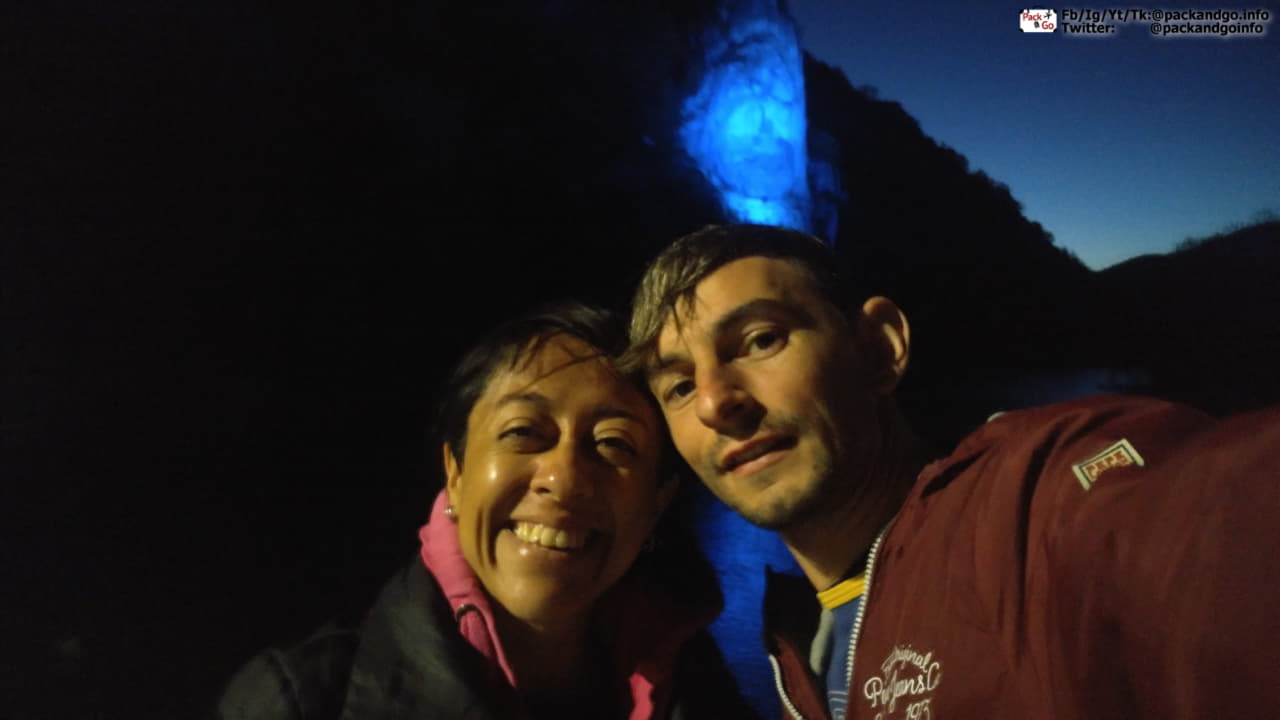
Just a note, Decebalus has been losing his nose over time. Tremors and cracks in the rock are responsible for this. So guys, don’t miss it! Pack and go to see it!
Monastirea Mraconia or Mraconia Monastery
This monastery is very close to the face of Decebalus (we were driving direction of Orșova - Dubova). So if you saw it already, you know you are in the right direction. The monastery was built on a place that previously was an observation-direction point for Danube vessels. The gorge here is narrow, so there was no space for two vessels to pass at the same time. We were told that the Mraconia Monastery may have existed since the middle of the 15th century. It was probably founded in 1453, destroyed during the Russo-Austro-Turkish war (1787-1792), and reconstructed after 1800, and later, in 1968, demolished during the construction of the first hydroelectric plant, Iron Gate I. The monastery rose from the ashes again in 1995.
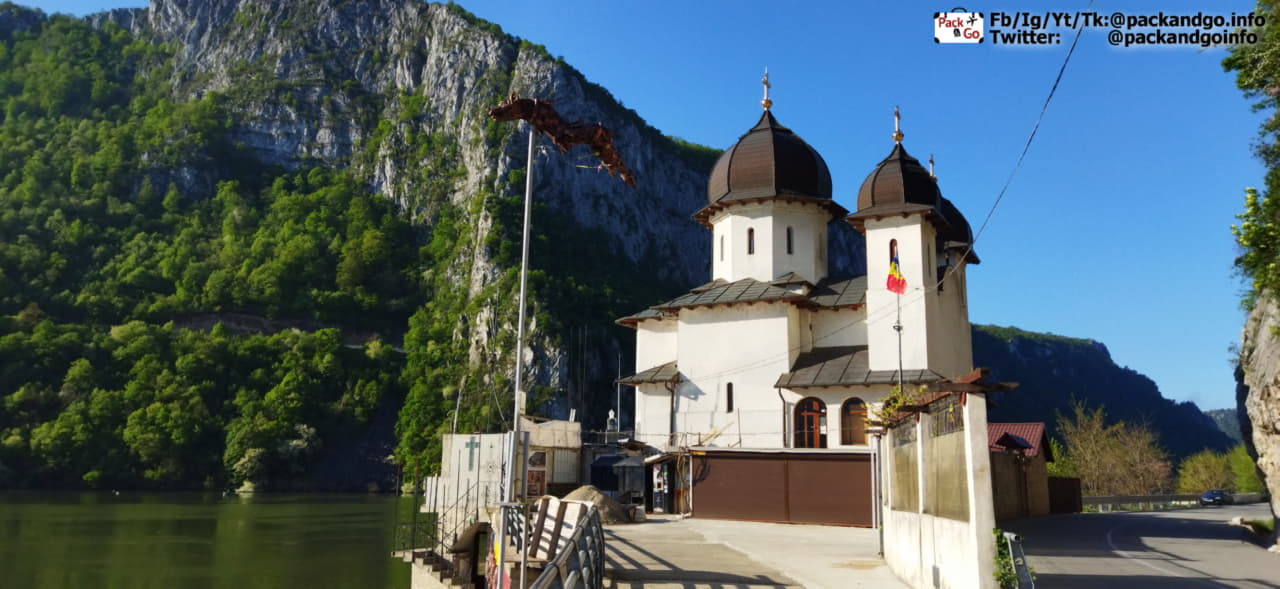
Grota Veterani or Veteran grotto
It is a grotto (cave) that was inhabited 4,000 years ago. Primitive humans found shelter there. It’s located on the Ciucaru Mare. The Dacians worshiped there the Zamolxis, later the Austrians and the Turks used it as a military place, and nowadays, it’s become a tourist attraction. It’s 24 kilometers from Orșova, after Dubova, in the direction we were driving. To have a better view of the grotto, you should go by boat.
Peștera Ponicova or Ponicova cave
It’s considered the largest cave in the area of Orsova. We were told it’s a bit more than a kilometer and a half, and it crosses the Ciucarul Mare and reaches the Danube River. It’s said you can access it by boat or by land. But when we went by boat, the guide only showed us the entrance and got a bit closer to it. He said that to explore it, special permission was required. You should request in advance, pay a fee, and then you will also get a guide. If you have accessed or know information about this, share it with us!
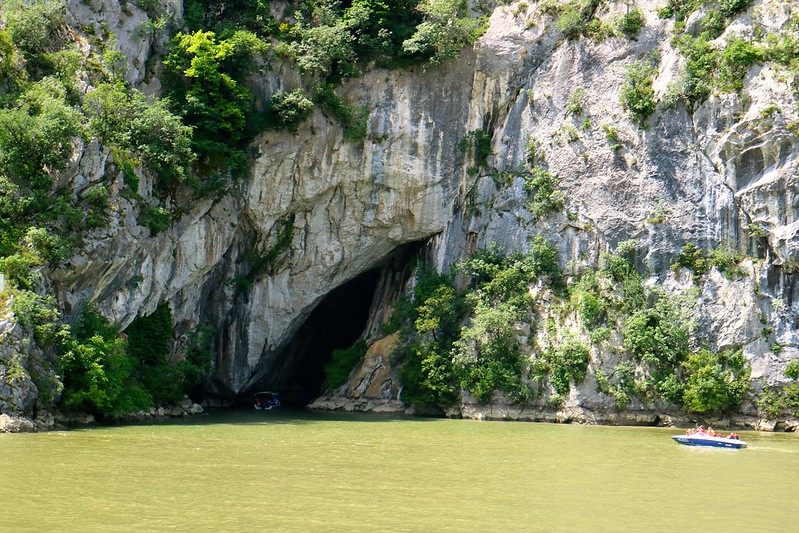
Tabla Lui Széchenyi or “In memory of Széchenyi”
This is another memorial plaque lying on a rocky wall. It commemorates the beginning of commercial navigation in this zone. You will see that it has written the name of Széchenyi István. He was born in Vienna in 1791, but his family became a noble and influential family in Hungary. So he is remembered in Hungary as a great Hungarian. He got into politics, was also a writer, and died in 1860.
He got the idea to make the Iron Gate zone navigable. His contributions were notable. He is also the author of the construction of a road of 122 kilometers useful for transshipping goods. In 1885, the Union of Hungarian Engineers and Builders engraved the name of Széchenyi into the Danube.
Natural trails to explore
You can also appreciate nature and the beauty of the gorges hiking around. We found two choices during our visit.
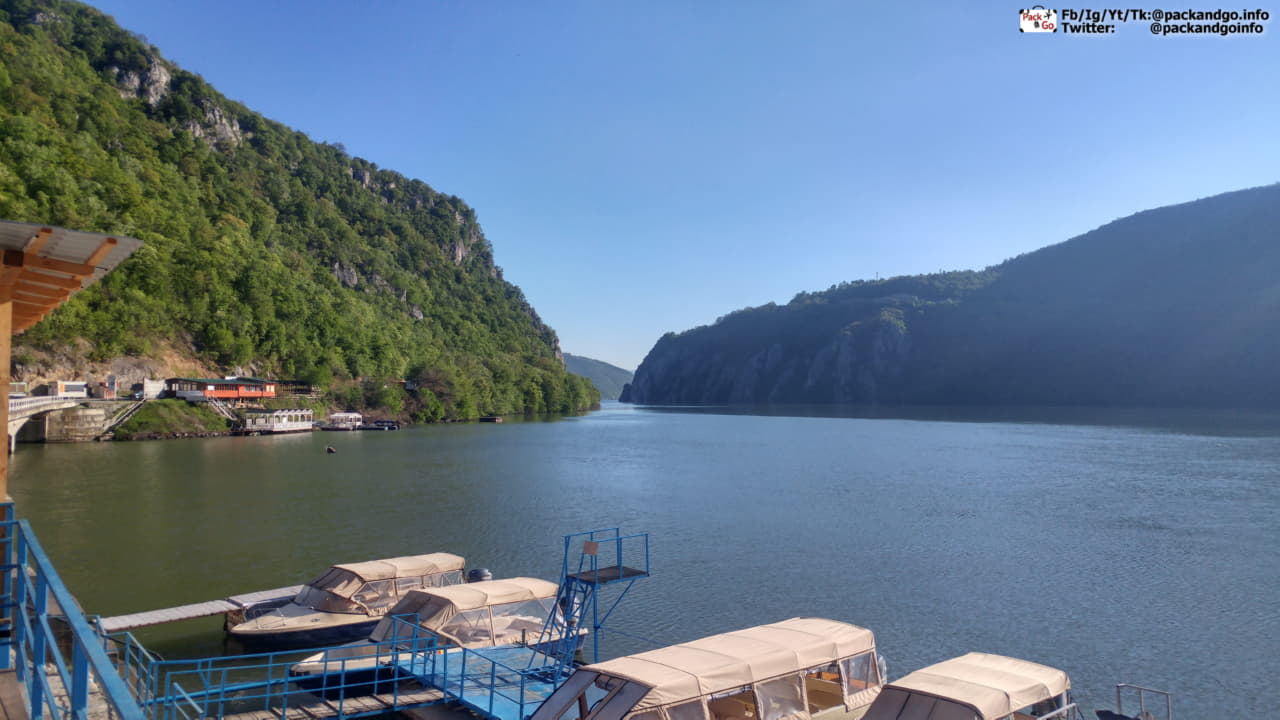
We went up to the Ciucaru MicPeak to have a look at the big Kazan gorges from above. Guys, the view is great! And the hiking was not too hard. The road is well marked. We saw a couple of families with kids, going up without a massive effort. And the great news is, after that short exercise, the reward for your body and eyes is great! The starting point for this hike is between Eselnita and Dubova. There’s a sign that points to the beginning of this nature trail. It should take you an hour to reach the top. But it depends on your pace.
You can also go to the Ciucaru Mare Peak to have a view of the small Kazan gorges. The starting point for this trail is just after Dubova. This is another good hike with a similar duration, an hour to get to the top and enjoy the panorama. The road is marked, nature is abundant, and we totally recommend it!
Tri-Kule or the Three Towers
If you keep driving 20 kilometers southwest of Dubova, you can find Tri-Kule. You will see some towers from the 15th century that were built to defend the area from the Ottomans. We only managed to see a bit of the two towers from the road. A local told us that the third is covered by water most of the time. The trees along the road and the Danube make it hard to have a clear view, but you can try. This was our last stop following the Danube. But the road keeps going, so if you go further, share your discoveries with us, guys!
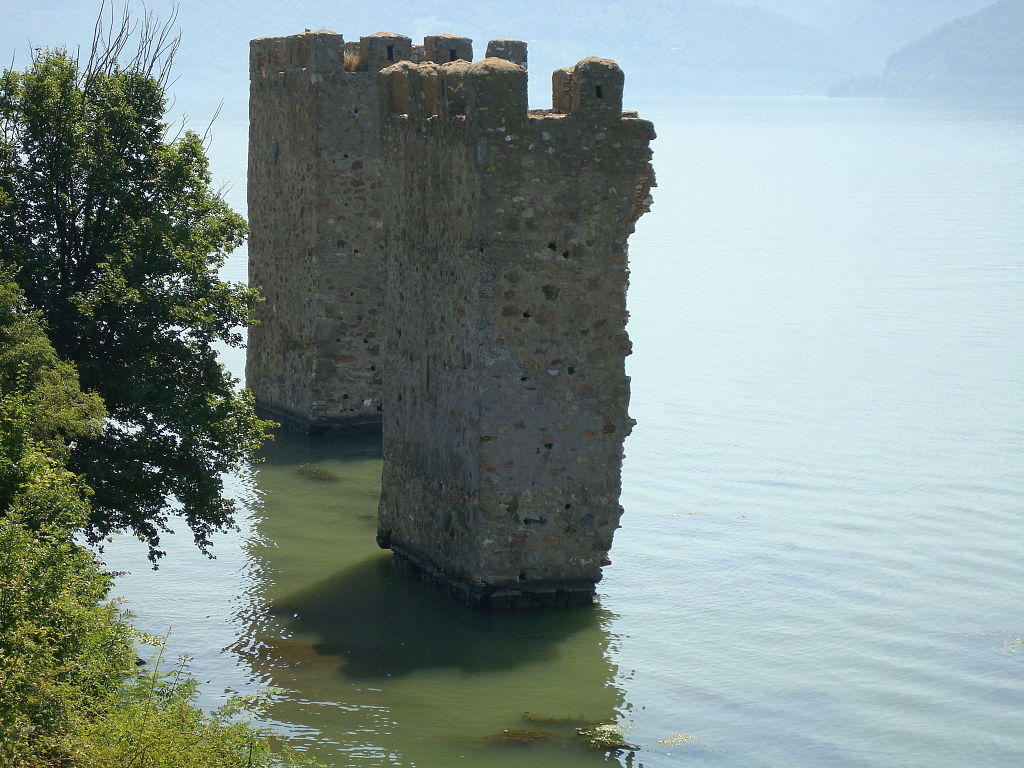
Restaurants with a terrace.

Following the Danube direction, you will find on the road different spots for you to eat something, get a coffee, or a wine. The Romanian food is attractive by itself, but to eat with such a view of the Danube and the gorges makes the gastronomic experience much more attractive.
Where to stay in Orșova?
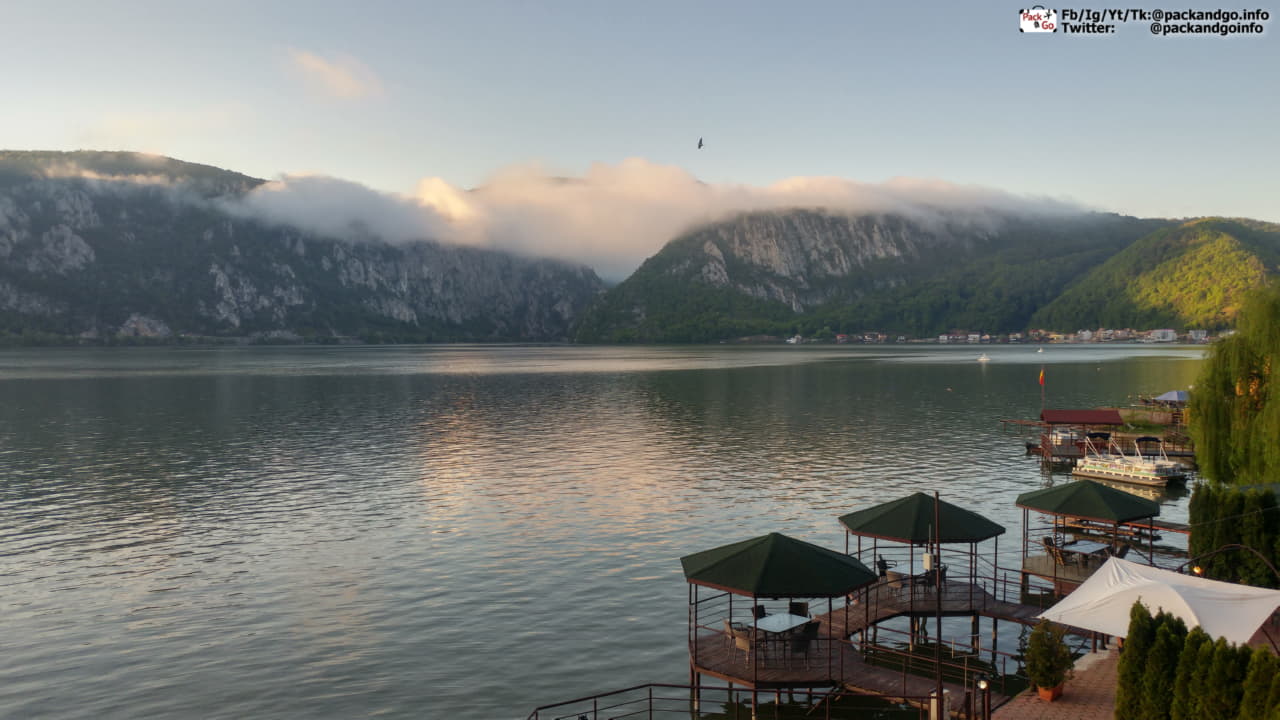
From Orșova to Eșelnița and Dubova, there are hotels, guesthouses, and even hostels. Here is a note: we saw a hostel whose premises looked more like a guesthouse. Rooms were not shared but were independent. The definition of guesthouse, hotel, or hostel there is a bit blurry in some cases. But the main point is that you can find comfortable accommodation in the area. Prices in Orșova are lower, but they don’t have a panoramic view of the river. The ones with spectacular views of the Danube and the gorges are more expensive. Still, you can find something affordable with a panoramic view. That is what you need! Choose the place that best suits your preferences and budget. But the only must is to be in a place where you can enjoy the view. Prices we saw started from 200 RON per night, in a double room, and up.
Conclusion
Orșova, the Danube, and its surroundings are full of history, ancient traces, and beautiful landscapes. As we told you, we ended up here by mistake, but now, we are glad it happened. Orșova, Romania, got into our hearts and memories as a beautiful discovery kicked off by an error.
Guys, follow us, and let’s discover together the next stop of this trip!
Coming up next, the Bigar waterfall (Romania), Timisoara(Romania), and Budapest (Hungary).
We were just in Vidin (Bulgaria), and before that in Belogradchik (Bulgaria).
| Follow PackAndGo.info at: | |
| YouTube | @packandgo. |
| @packandgo.info | |
| X | @packandgoinfo |
| @packandgo.info | |
| Bluesky | @packandgo.bsky.social |
| TikTok | @packandgo.info |
- Details
- Written by: Gianna Esquivel
- Hits: 3144
Hi everybody! This time we are in Vidin (Видин), Bulgaria. We are enjoying a lot going around this country. We don’t have a fixed itinerary. We decide direction based on the cool stuff the map points us to see or the local recommendations. So, one of these days while checking the map, we saw a wide and long sign: the great Danube river!
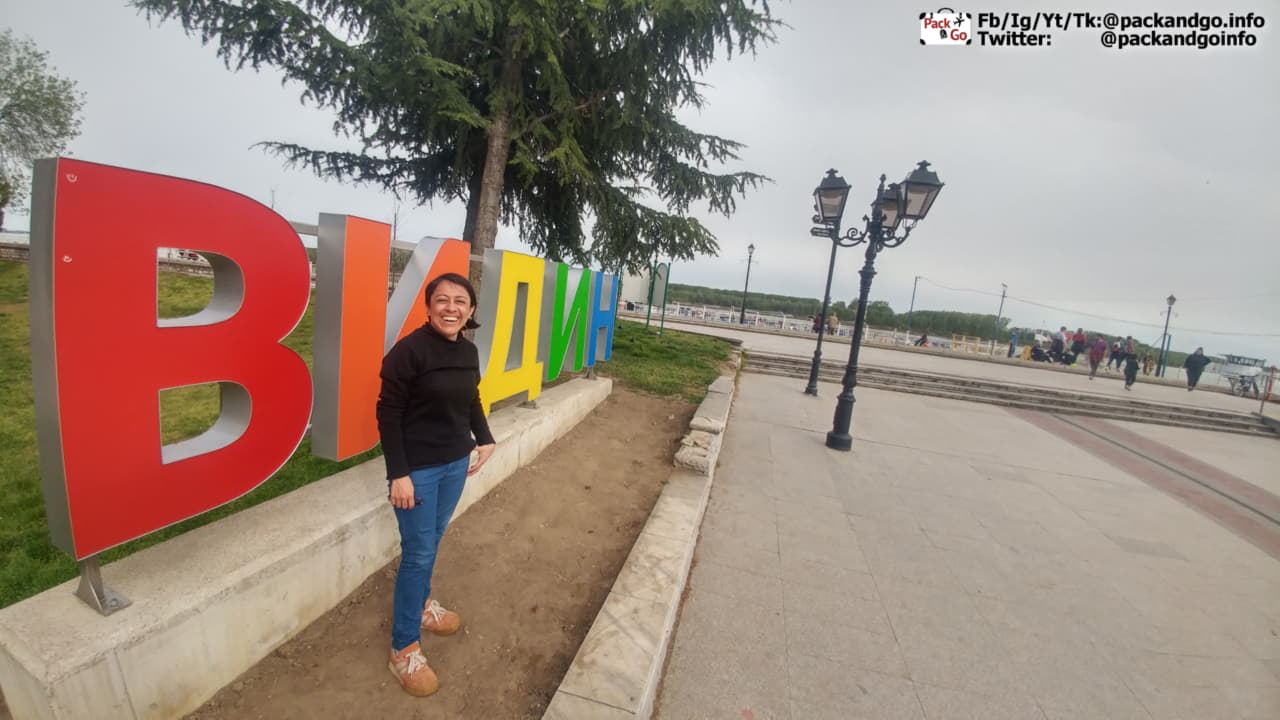
The Danube is the second-longest river in Europe. It flows from Germany all the way 2,850 kilometers, passing through Slovakia, Croatia, Austria, Hungary, Ukraine, Romania, Serbia, and Bulgaria before draining into the Black Sea. That is how we ended up driving to Vidin. Let’s explore it together!
Where’s Vidin?
Take your map and go to the left corner of Bulgaria. Vidin is in the northwest part of the country. It’s near the borders with Serbia and Romania. It’s one of the oldest cities in Bulgaria and an important port for this nation.
What’s the origin of Vidin?
Vidin was built on the remains of an ancient Celtic settlement called Dunonia (3rd century BC). That means “fortified hill” in Celtic. This settlement became later the Roman fortified Bononia. The place grew through time. Then, the Slavs arrived and settled calling the place Bdin or Badin. As you see, this name is closer to the current one. In a moment, it became part of the Roman Empire and remained that way until the 14th century. After the Ottomans arrived and later the modern Bulgarians. The origin of Vidin is really old.
What to do in Vidin?
When we arrived, one of the first things we heard from locals was that Vidin is not a common holiday destination for Bulgarians. Our first impression was, that we were not in a tourist spot. And that’s ok! We have been in places not really designed for tourists and we have had great experiences getting the real local taste. But while exploring Vidin, this was not the case. We found many international tourists. Especially foreigners enjoying and getting the best out of the time their cruisers stop here. So we joined them!
Baba Vida fortress (Средновековна Крепост Баба Вида).
We were told that this is the only medieval Bulgarian fortress and castle that is fully preserved. Its construction dates back to the 10th-14th century. The fortress was built on the remains of the ancient Bononia. First, the castle was raised. Then the rest of the place. Ivan Stratsimir lived there. He was the last Bulgarian king before Bulgaria fell under Ottoman control.
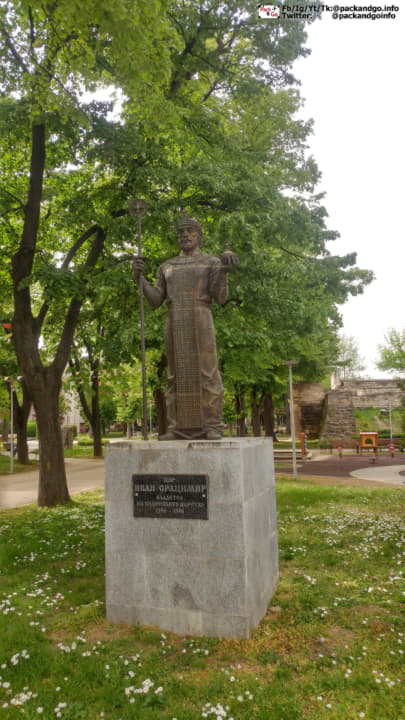
Ottomans used for a long time the fortress. After the Bulgarian Liberation (1878), the premises were occupied by the army. Besides them, there have been discoveries of remains that belong to the Roman, Byzantine, early Bulgarian, and late Bulgarian periods.
And if you like stories, there’s one here about the name of the fortress. Vida was supposed to be a woman, the oldest of three sisters, daughters of a rich Bulgarian boyar. When Vida witnessed how the marriages of her sisters Gamza and Kula failed, she decided not to get married. She rejected every single proposal she got. The castle was built and she decided to stay in it forever.
There’s a moat around the fortress. Currently is dry but in the past, it was filled with water from the Danube which is very close. You will see that the bridge was mobile, the nine corners of the building, its intermediate towers, and the walls. Besides, there’s a prison and a hanging zone in the fortress.
You can take a look at these, the cells, a prisoner and an executioner figures, some old artifacts for torturing, gallows, cannons, and objects that were used in the past for daily tasks. The fortress was strategically built just next to the Danube river. Currently, while being at its highest points you can have very nice views of the great Danube.
If you go in the Summer, there’s a chance for you to find concerts, theater performances and other cultural activities there.
| Follow PackAndGo.info at: | |
| YouTube | @packandgo. |
| @packandgo.info | |
| X | @packandgoinfo |
| Bluesky | @packandgo.bsky.social |
| @packandgo.info | |
| TikTok | @packandgo.info |
Ottoman Gates, Kaleto.
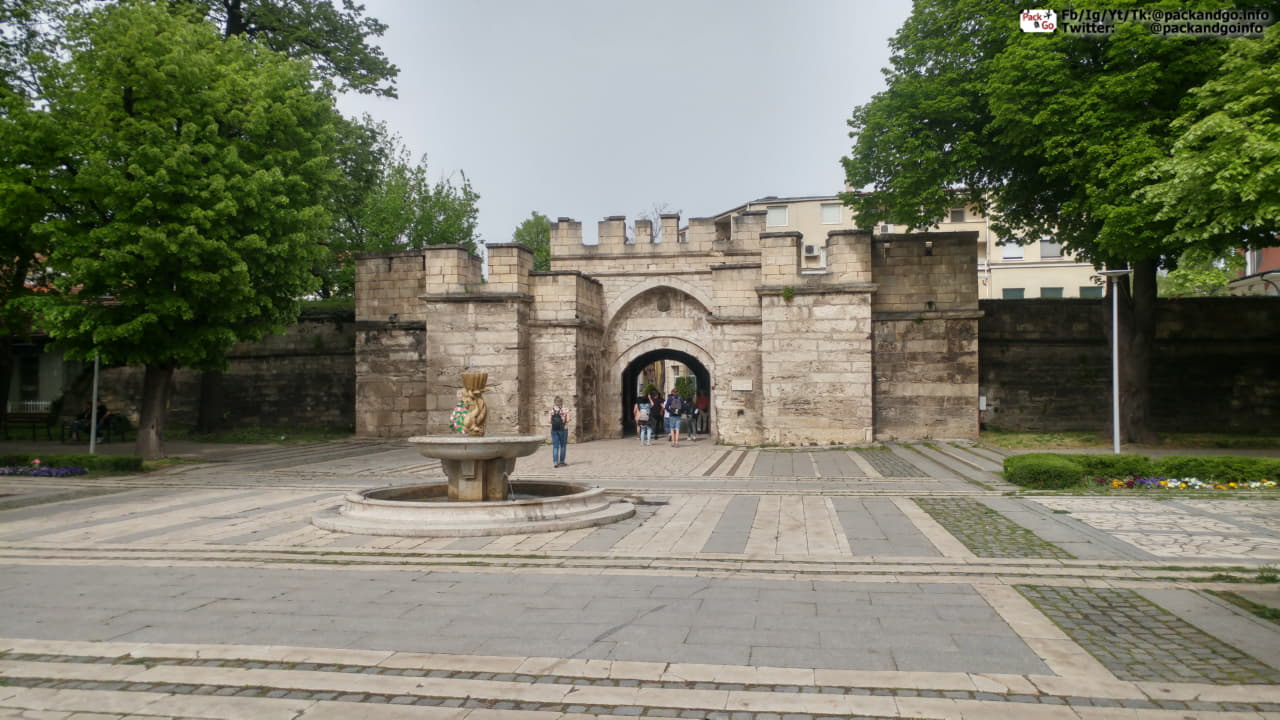
Guys, in the past, during Ottoman rule, they built a fortress to protect the city. As a result, there’s a wall still visible and in good condition around the center of Vidin. Walking there you can see the wall and its different gates. Being at Kaleto has a magical effect. You see contemporary houses, maybe a soviet building in the distance, and a few steps later, you cross an Ottoman gate that dates back to the 17th-18th centuries. No doubt, Vidin means history, a lot of history.
Historical Museum Vidin.

It’s also known as the Konaka museum. Konaka comes from the Turkish “konak” which means big building. The architecture of the building shows features of the Bulgarian Renaissance. The Ottomans used it as a residence. It was later a police station and now, it’s the historical museum of the city. Exhibitions show Vidin’s evolution through different periods. Being one of the oldest cities in this country, be ready for a long story.
The Orthodox St. Panteleimon Church.
It is small, and its exterior is not impressive but you can like the artwork of the interior. It’s a construction that belongs to the 17th century. An inscription on the door says it was built in 1634. There are images of saints on the walls and gospel scenes on the vault. In the center, you will see two medallions, one for Jesus and the other for the Virgin Mary. All the art inside came through time. A Slavic inscription in the church’s nave points that the painting of the church occurred in 1646. The place seems to be linked to Sophronius of Vratsa, a Bulgarian cleric that had an important role in the early Bulgarian Revival (Renaissance).
You may find the church close. Clergymen around can open for you. They don’t allow you to take pictures but they can give you interesting information about the place.
If you are into churches and their architecture, there are more choices for you in Vidin. For instance, St. Dimitar cathedral is considered the second biggest temple in Bulgaria. St. Alexander Nevski in Sofia tops the list. St. Dimitar also offers interesting historical facts and stories. If you want to know them, just Pack and Go! hahaha
Danube river park.
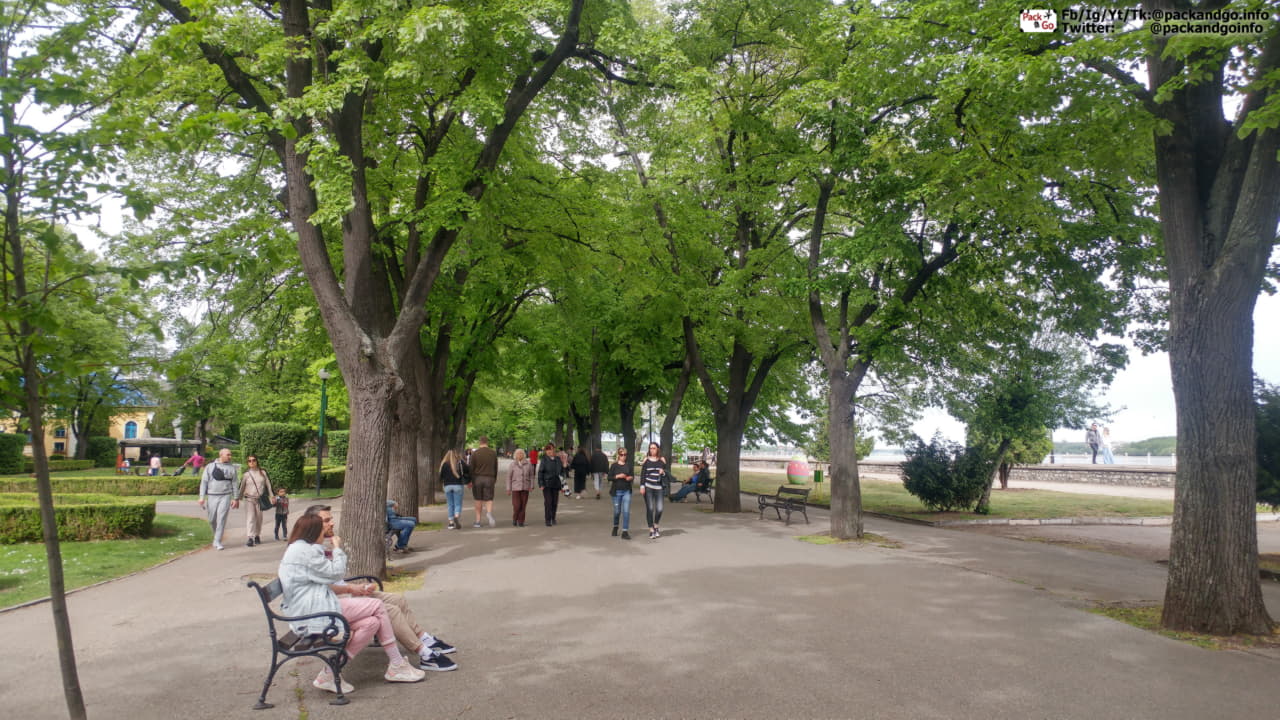
We like parks a lot! They are the perfect spot to have a break, to get shade during hot days, or to get a snack while lying on the grass or sitting on a comfy bench. And this park has this and more. You can find different food stands for enjoying an ice cream, a cold beer, or a complete meal with a marvelous plus, the view of the Danube!
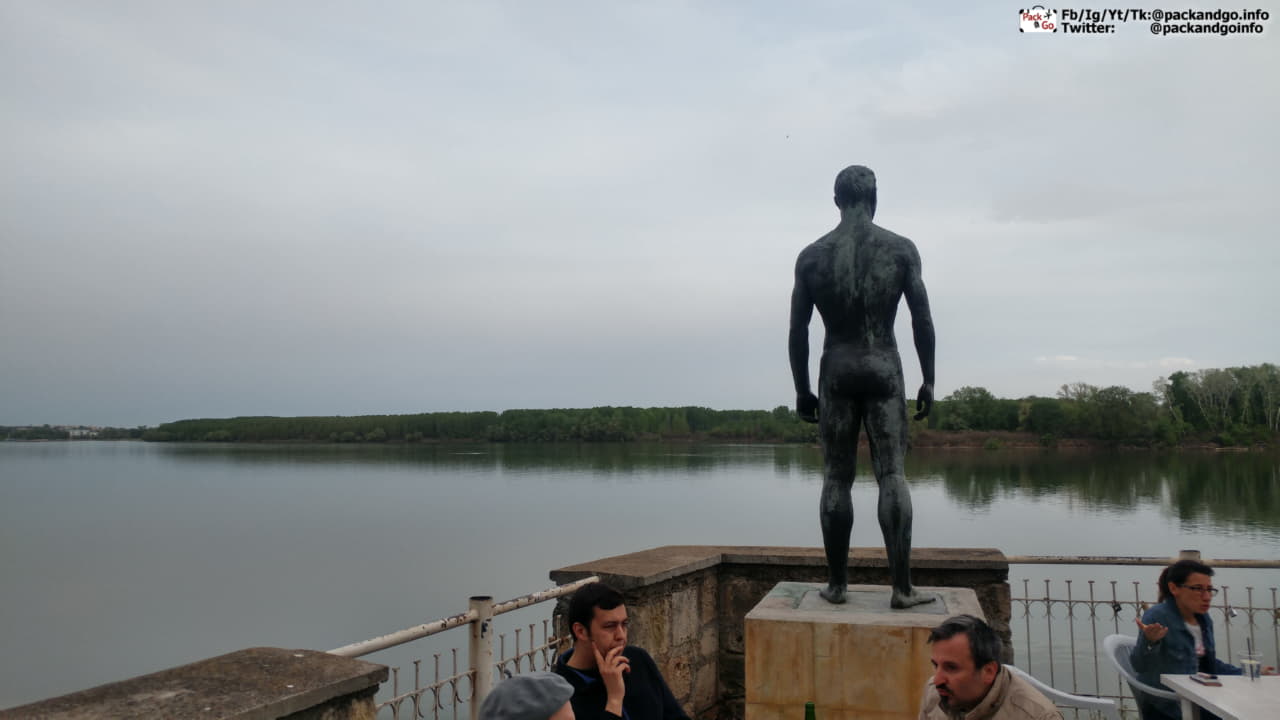
The park is around 2 kilometers for you to have a nice walk. It goes along the river. We couldn’t stop watching the Danube so we got a beer on one terrace. We spent some hours there just watching the cruisers' activity on the river, people going around and having some relaxing and fun time. Go to the park and get a bit of Vidin’s essence!
Danube cruises.
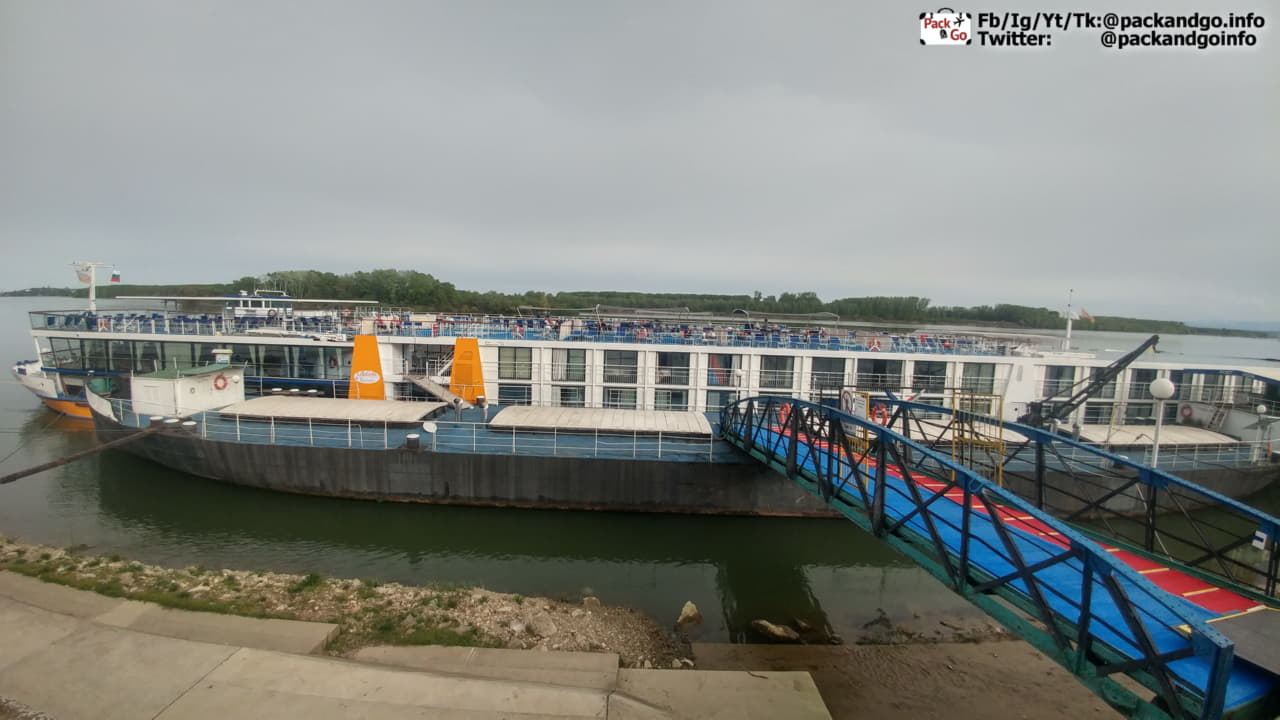
While in the park, we talked with some people about the cruisers. Different cruise lines operate in the Danube. They said the Danube cruisers are very demanded every year and Vidin is a must-stop on their itineraries. So if you are into cruisers, you could consider it a choice to visit Vidin, Bulgaria, and enjoy the great Danube.
Vidin is also included in Serbian and Romanian tours.
The bridge.
There’s a bridge that connects Bulgaria (Vidin) to Romania (Calafat). It was finished in 2013. It goes across the Danube and it replaced a ferry that used to operate there. It’s mostly for cars because it’s away from the center of Vidin, in the industrial zone. But if somehow you are there walking or on your bicycle, you can take it for free and have another angle of the Danube.
Boat restaurants.
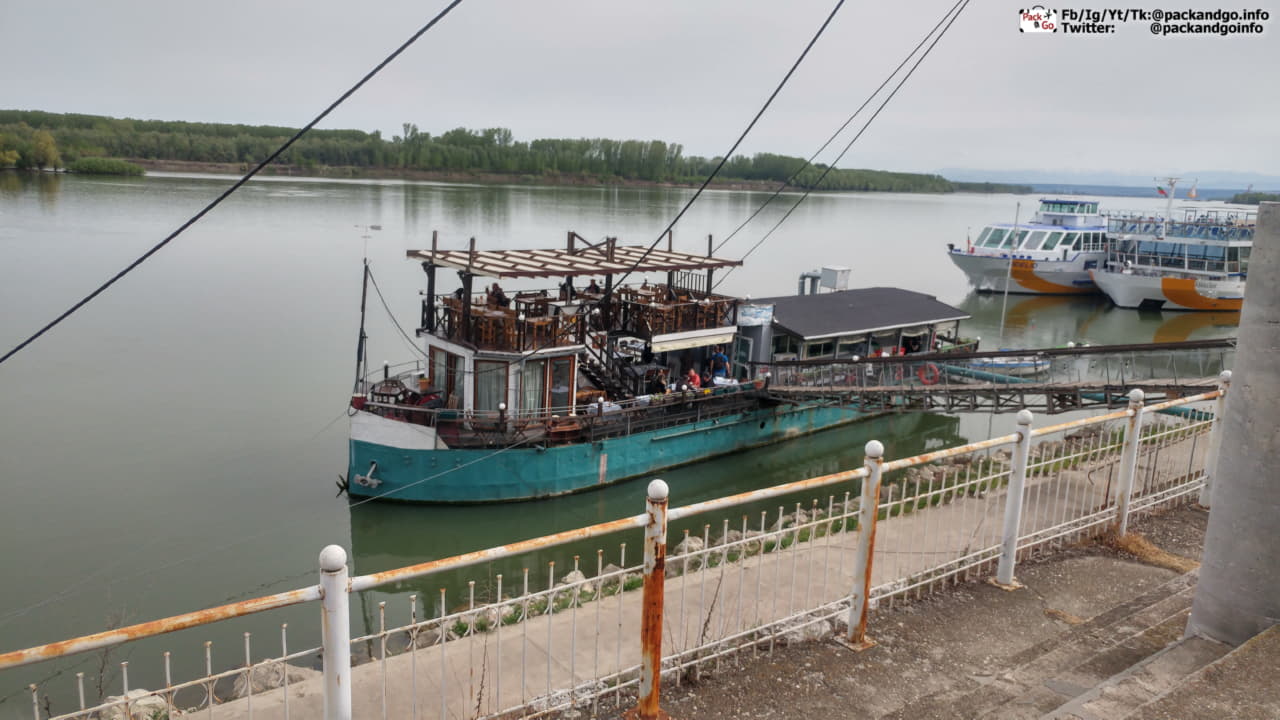
If you feel like having lunch or dinner directly on the Danube, this is your choice. There are a few boat restaurants there waiting for you with their menus full of delicious Bulgarian food. Feel free to try rakia or a cold Bulgarian beer!
Conclusion.
Guys, Vidin, the ancient guardian of the Danube is an alive city that is worth visiting! Due to its location, it can be your last stop to enjoy the Bulgarian culture before crossing to a neighboring country, or it can be your access point to this beautiful country. As we said before, Vidin means lots/tons of history. And in our opinion, learning history is easier and more interesting when you travel. So why don’t you just pack and go to Vidin?
Follow our route! Let’s discover together our next stop!
| Follow PackAndGo.info at: | |
| YouTube | @packandgo. |
| @packandgo.info | |
| X | @packandgoinfo |
| Bluesky | @packandgo.bsky.social |
| @packandgo.info | |
| TikTok | @packandgo.info |
Check our previous articles:
The best things to do in Belogradchik
Belogradchik Rocks, the epic rocks soaked with blood and hopes for freedom
What to visit near Lovech, Bulgaria?
What to do in Lovech (Ловеч)? - A great Bulgarian destination you should visit!
- Details
- Written by: Martin Pramatarov
- Hits: 2223
If you are checking out Belogradchik you probably know already that there are some astonishing rocks – the Belogradchik Rocks. But, apart from seeing them, what are the best things to do in Belogradchik?
Visit the main attractions in Belogradchik and its surroundings.
In our previous article “Belogradchik Rocks, the epic rocks soaked with blood and hopes for freedom” We already mention all the landmarks of Belogradchik. The 1st thing you should do is to visit them. Belogradchik Rocks, Belogradchik Fortress Kaleto, the downtown of Belogradchik, and Magura Cave are a must. All of them are amazing and you have a great variety – stones, a fortress, a town, and a cave, and all of them in the same place. Wow!
Fly with hot air balloons over Belogradchik Rocks
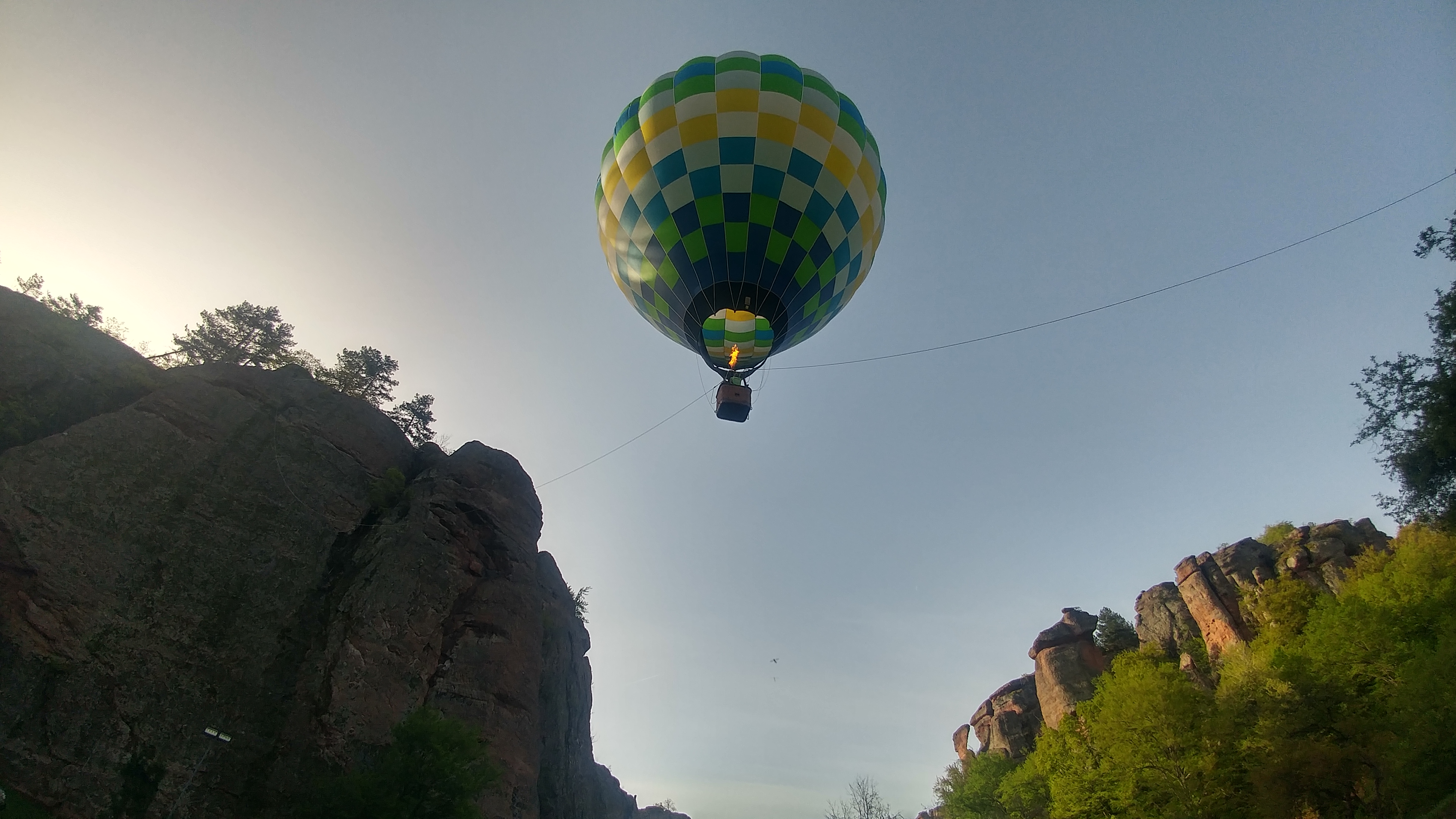
Yes, you can enjoy the amazing view of the Belogradchik Rocks riding on a hot air balloon. The experience is spectacular. It is perfect for couples who want to share a romantic and thrilling trip. The flight lasts 1 hour approximately.
There are different sizes of hot air balloons. Some can take up to 4 passengers (good for families with children) and others can take only 3 or 2 passengers (these are perfect for couples).
The price of a hot air balloon ride per person is between 200 and 300 BGN (between 100 and 150 EUR). These prices were last checked in the summer of 2022 by a Bulgarian (me).
You can also have an economic experience, that only lift you for 10 minutes with a hot air balloon. That way, you can enjoy the view from the top, make Instagram pictures, and go down. The price of the static air balloon lift is between 35 and 50 BGN per person (between 18 and 25 EUR).
I personally recommend the full experience. Just book your trip in advance, because the attraction is always full of people.
You can check Adventure.bg or Grabo.bg (a site for group coupon promotions).
| Follow PackAndGo.info at: | |
| YouTube | @packandgo. |
| @packandgo.info | |
| X | @packandgoinfo |
| Bluesky | @packandgo.bsky.social |
| @packandgo.info | |
| TikTok | @packandgo.info |
4x4 safari ride near the Belogradchik Rocks
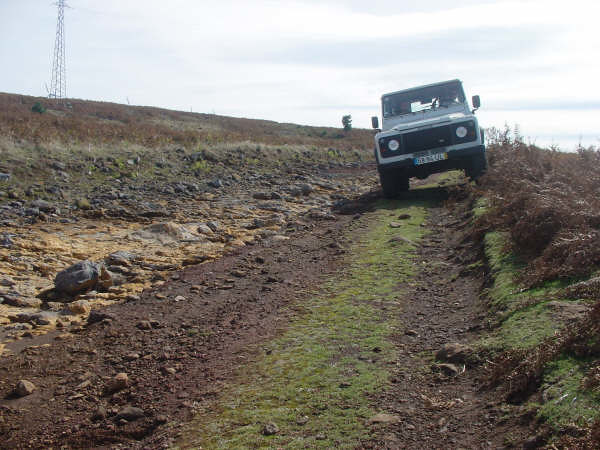
If you are a fan of extreme adventures, you can also check the 4x4 safari trips near Belogradchik. You can get dirty and have fun jumping around the rocks and screaming as much as you like.
You can choose the 4x4 safari ride, if you prefer to be a passenger or if you want to visit the place with more people. There are 1-hour trips, 1 and a half hour and 3-hour trips.
The price for a 4x4 ride in Belogradchik is between 30 and 100 BGN per person ( between 15 and 50 EUR). The one-hour trip cost 30 BGN (15 EUR). These prices were last checked in the summer of 2022 by a Bulgarian (me).
You can check New.Adventure-bg.com, or Grabo.bg (a site for group coupon promotions).
ATV ride near the Belogradchik Rocks
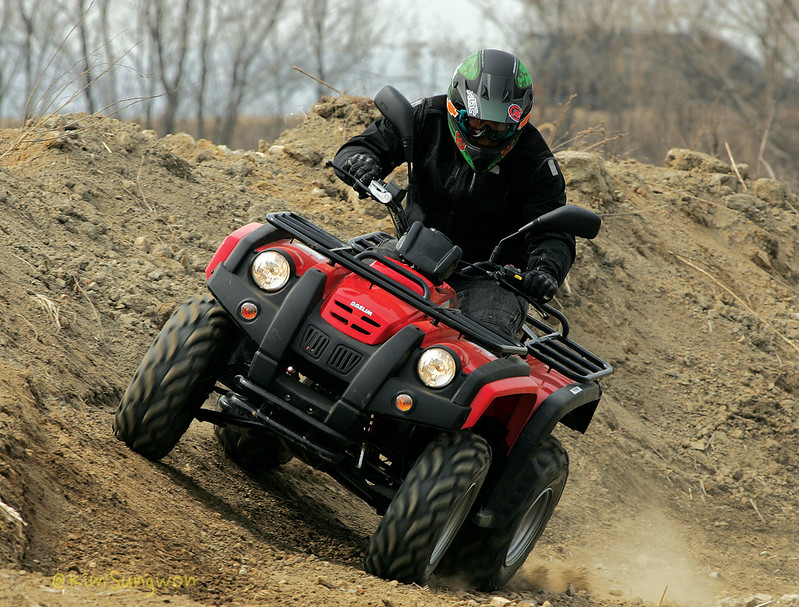
Another extreme ride, but this time you can be in charge. Ride an ATV in Belogradchik’s surroundings. The terrain makes it very fun to ride around, jump and even get dirty. The adrenaline rides are a cool change, from the peaceful nature that surrounds Belogradchik. The trails are great. They are a bit challenging but still good both for beginners and advanced ATV riders.
The trip lasts 1 hour, which is a very good period.
The price of an ATV ride near Belogradchik is 60 BGN (30 EUR) per person.
You can check DirtyAdventures.bg for booking your trip.
Boat trip with a Dragon boat on Rabisha lake
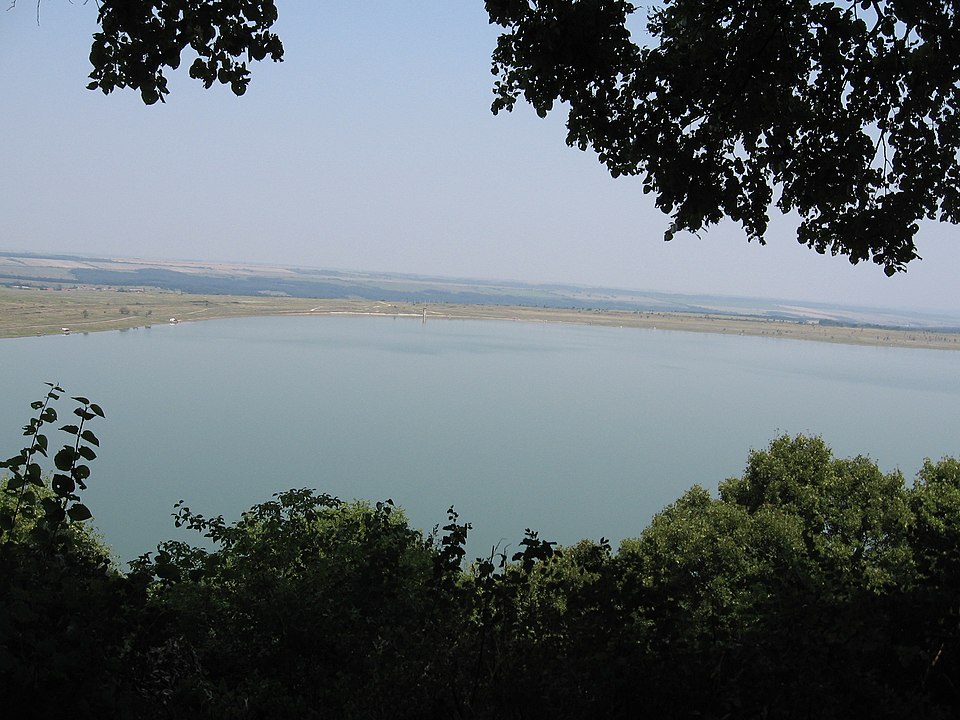
One extravagant trip, that kids can like a lot is the boat trip on Rabisha lake with dragon boats. The boats are special, they are decorated like dragons, with fearsome dragon heads and canoe shapes. They can hold up to 20 people. On the board, there are two drums, to give the beat and motivate the rowers. The passengers are equipped with safety vests and they are guided by the tour guide.
The Rabisha lake is very close to Magura Cave, so you can combine both of them in a day.
A typical trip takes around 3 hours and includes 2 hours of a boat ride.
The price of the dragon boats is 20 BGN (10 EUR) for children under 12, and 30 BGN (15 EUR) for adults.
You can check the boat tour on New.Adventure-bg.com.
Horse ride and e-bike ride tour
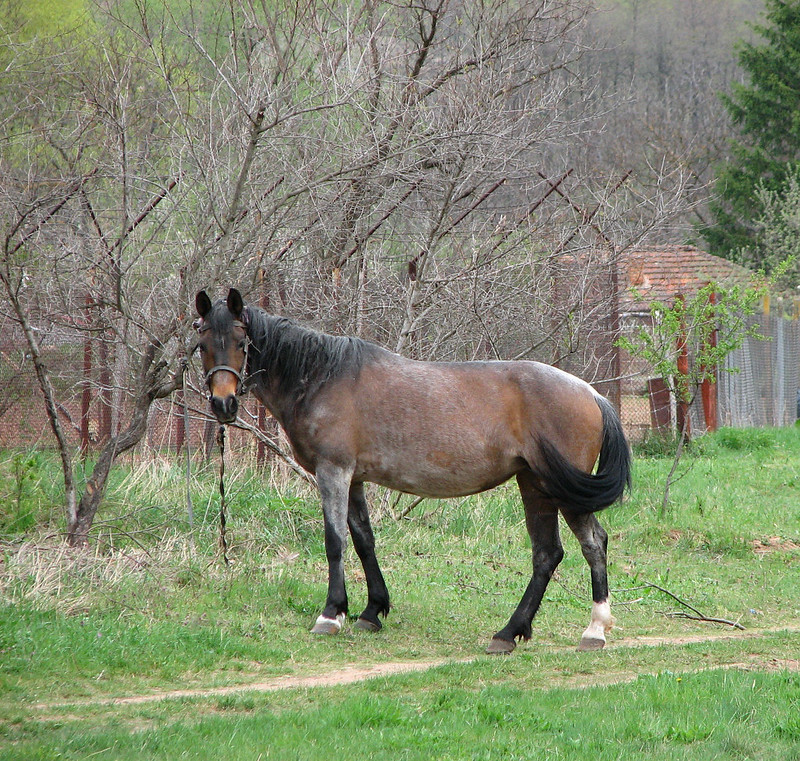
There is a very nice joined experience, horse riding, and e-bike riding. The location of the horse stable is a bit far (in Veshtitsa (с.Вещица), 10 kilometers away from Belogradchik), but the e-bikes will take you there with no effort. You can enjoy a nice route, around nature, without sweating from peddling. When you get there to Zbegove rocks, you have the chance to ride beautiful horses. The experience is perfect for beginners and children. The animals are very friendly and non-aggressive. The horse riding lasts 30 minutes.
The whole tour lasts around 4-5 hours.
If you are not into horse riding, still the trip with the e-bikes is worth it. You can use the half hour to take an extra breakfast.
The price for a horse riding and e-bike tour is 50 BGN (around 25 EUR).
You can check the horse riding tour on New.Adventure-bg.com.
Hiking with a guide
You can join one of the different hiking groups and have perfect trekking around the Belogradchik Rocks. There are plenty of routes, and all of them have magnificent views. You can do it alone, or join a group with your family and friends. The price is really affordable.
The price for a waling trip, 1 to 3 hours costs between 4 and 6 BGN (between 2 and 3 EUR).
You can check the hiking tours on New.Adventure-bg.com.
Eat Bulgarian food
The Bulgarian cuisine is spectacular. We have a great mixture of Turkish, Greek, and overall Balkan taste. You will be amazed by the amazing dishes you can try here. And yes, Belogradchik is not a big town, so you won’t get a Michelin star restaurant, but you can get the real taste of Bulgaria in a little traditional Bulgarian restaurant – mehana.
Drink Bulgarian drinks
If you haven’t heard already, in Bulgaria we have great wines. Since the country has a warm climate, the grapes here can grow perfectly. There are many traditional grapes from Bulgaria so you can enjoy the authentic taste of red or white wines. And don’t forget the Rakia. It is a Bulgarian brandy and it can be created from different fruits like plums, apricots, peaches, and pears.
Conclusion
In Belogradchik, there are a lot of things to do. You can hop on an adventure ride, and fill some adrenaline, or go for a calm and relaxing holiday. No matter which you choose, it will be a perfect weekend. If you want to know more about Belogradchik’s history, the battles, and the myths that surround Belogradchik, we already have a great article about it “Belogradchik Rocks, the epic rocks soaked with blood and hopes for freedom”.
If you are searching for a nice weekend destination, that is far, but not too far away from the capital Sofia, you can check these excellent destinations:
Follow us and see many new cool destinations.
| Follow PackAndGo.info at: | |
| YouTube | @packandgo. |
| @packandgo.info | |
| X | @packandgoinfo |
| Bluesky | @packandgo.bsky.social |
| @packandgo.info | |
| TikTok | @packandgo.info |
- Details
- Written by: Martin Pramatarov
- Hits: 3311
We are close to Belogradchik, near Vidin, Bulgaria. It is dark and wet. We are slowly driving to a single-line road through the forest. To say it is a road maybe is too much. It barely looks like a route. No car lights, no human voices, just insects and jackals screaming that night. There are big holes on the road, and many rocks, and the car is really struggling. It is getting harder to drive. Suddenly, behind the corner we see a projector pointing up. In front of us, we are seeing the magnificent Belogradchik Rocks in all their glory. A massive rock formation, comparable to no other with more than a thousand years of history.
Tonight we camp under it, and tomorrow we will climb it, and explore its present and its grim history.
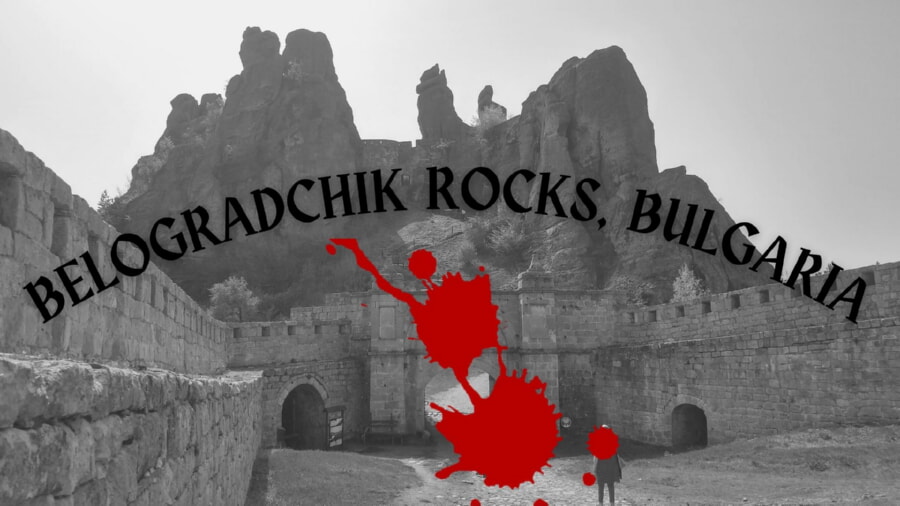
The morning came with an abrupt sound. A very strange noise. Just like a dragon, 5 seconds of “B-r-r-r-r-r-r”, followed by silence. Then again “B-r-r-r-r-r”.
I jumped from my sleeping bag, open the tent and what do you think I saw? A massive air balloon rising just 50 meters away from us. There were 3-4 balloons, getting ready one by one to rise and hover over the great Belogradchik rocks. It was still early, so we made a coffee to enjoy the beautiful site. When we properly open our eyes, we will learn more about the history of Belogradchik and the bloody rebellion of 1850.

Where is Belogradchik and how to get to Belogradchik?
If you are wondering where Belogradchik and Belogradchik Rocks are, here you have it.
Belogradchik is located in northwest Bulgaria and it is a part of Vidin Province. The name Belogradchik can be translated as the little white town.
You can get to Belogradchik by car from the following Bulgarian cities (Click on them to see Google Navigation instructions):
From Vidin to Belogradchick takes 55 minutes (53km).
From Lom to Belogradchik takes 1 hour, and 5 minutes (63km).
From Montana to Belogradchik, takes 1 hour, 5 minutes (66km).
From Sofia to Belogradchik, takes 2 hours, 55 minutes (179km).
You can get to Belogradchik by car from the following Serbian cities (Click on them to see Google Navigation instructions):
From Nis to Belogradchik, takes 3 hours (152km).
From Sofia to Belogradchik, takes 4 hours (300km).
You can get to Belogradchik by car from the following Romanian cities (Click on them to see Google Navigation instructions):
From Calafat to Belogradchik, takes 1 hour, and 20 minutes (70 km.).
From Orsova to Belogradchik, takes 3 hours and 5 minutes (192 km.).
From Bucharest to Belogradchik, takes 5 hours, and 45 minutes (383 km.).
| Follow PackAndGo.info at: | |
| YouTube | @packandgo. |
| @packandgo.info | |
| X | @packandgoinfo |
| Bluesky | @packandgo.bsky.social |
| @packandgo.info | |
| TikTok | @packandgo.info |
Top 4 what to see near Belogradchik?
-
Belogradchik Rocks. So we woke up and it was time to explore. The first and most obvious choice was the Belogradchik Rocks. They are massive, and you can see them all around. They just beg you to climb on them!
-
Belogradchik Fortress. After than, we were eager to get to the Belogradchik Fortress and learn about its history. It turned out that it has a lot of stories to tell, about many battles during the centuries.
-
Belogradchik town. Before leaving Belogradchik we went around the town itself. It is a small town, but it has some nice accommodations and restaurants.
-
Magura Cave. And the last stop we went to was the Magura Cave. It is a long cave, with very beautiful tunnels. Shame, that it has become too touristic. Now the price is considerably higher than other similarly interesting caves in the area, and its main attraction, the cave paintings, was forbidden for tourists. I had a different view of Magura Cave when I visited it in 2011, and sadly, back then it was better.
Let's see more about these places.
The Belogradchik Rocks
The Belogradchik Rocks are ancient rock formations, spread over an area of around 50 square kilometers, that have more than 200 million years! The dinosaurs were roaring around them, can you imagine? A T-Rex trying to climb up with its small hands hahahahaha. Ok, I got a big out of the point.
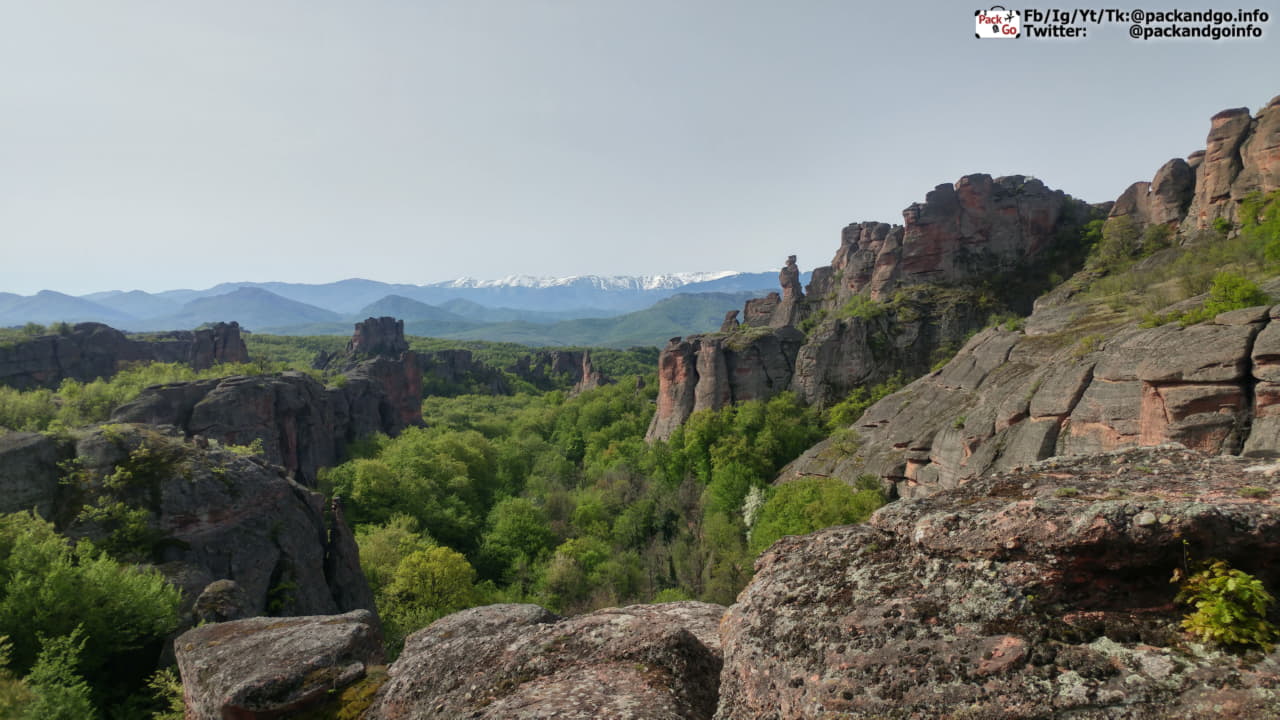
The Belogradchik Rocks are a combination of sandstones and conglomerate rocks with different colors. Some are red, others yellow, beige, and brown. The highest can reach up to 200 meters in height. They have various shapes and sizes, thanks to natural erosion, denudation, and various natural factors. Even sand-clay soldering, thanks to the high temperatures, 20 million years ago.
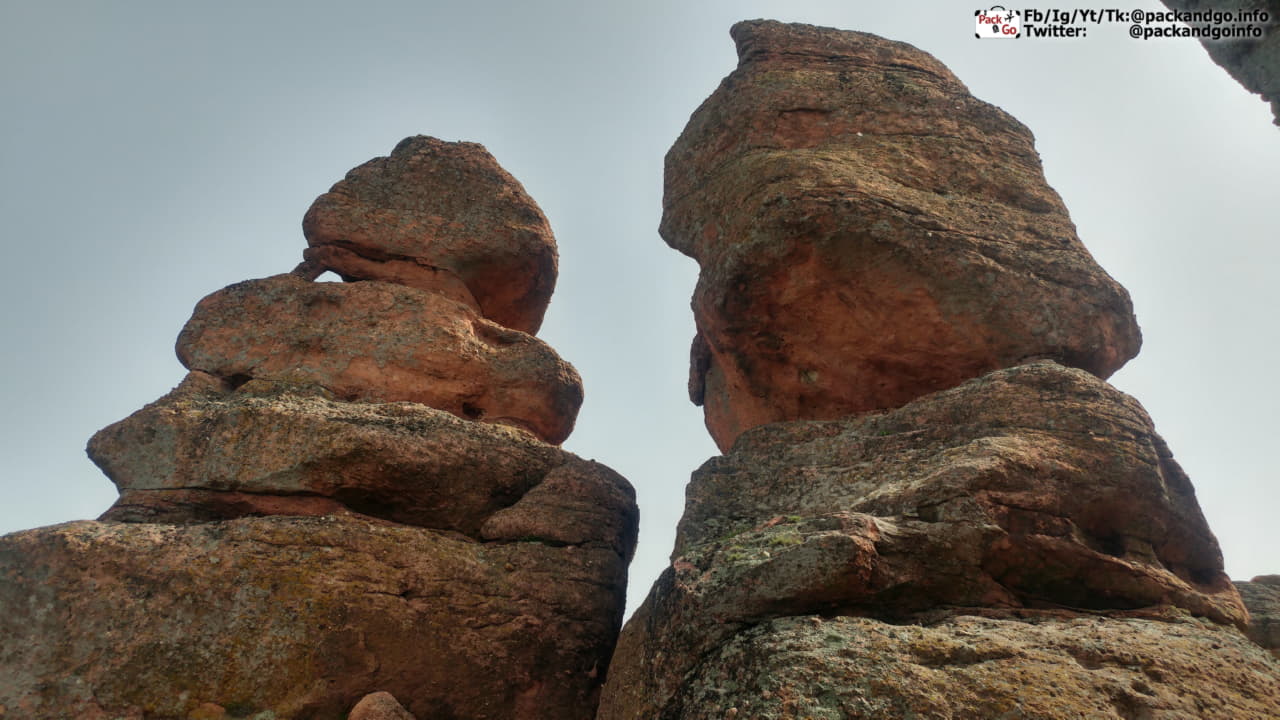
The Belogradchik Rocks are part of the UNESCO world heritage site (Global Geoparks Network) and the European Geoparks Network.
It was the Bulgarian entry to the New 7 Wonders of Nature, but sadly it couldn’t get into the list, because there were not so many Bulgarian to vote for them. We are just 6.9 million people.
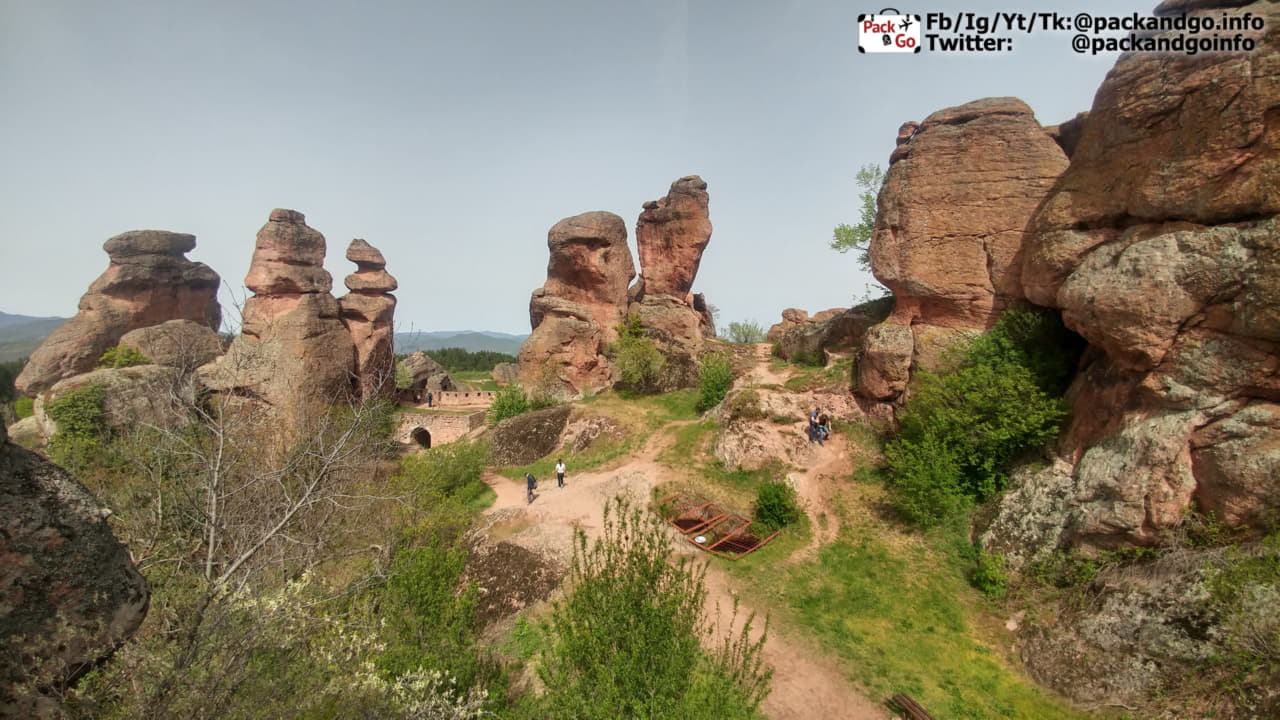
The local people have named many of the rocks: The Madonna, the Horseman, the Monks, the Mushrooms, Adam and Even, The Schoolgirl, The Bear, the Dervish, The Shepherd Boy, and more. They even created stories for them. Here are two of the legends of the Belogradchik Rocks.
The Legend of the Madonna of Belogradchik (The Madonna rock, a part of Belogradchik Rocks).
Once upon a time, there was a woman, so beautiful like no other. Hidden under her nun’s rope, she was living in a monastery on the Belogradchik Rocks.
The oldest nun, the Mother Superior was aware of the tremendous beauty this nun had, and she was often reminding her. “You are young and beautiful, but you belong to God and no other, remember that”.
One day, there was a celebration in the village, for Petrovden (the day of Saint Peter), and the nun went there. Between laughing and fun, she saw one extraordinary man. A young strong guy, riding a white horse. The sparks were too strong and she broke her vow to God.
9 months later, the cry of a baby echoed the rooms of the monastery. The nun couldn’t hide what she did. The Mother Superior was mad. How could she betray God?
She was so angry that she banished the nun, never to return to the monastery again. Never to wear a nun’s rope and to live as an outcast, alone with her child.
This destiny was worse than death for the nun. The people looked at her despised. Nobody wanted to talk with her or help her in any way.
She suffer for a long time and eventually came to the monastery to beg for mercy. Her call was not heard, and the monks and nuns threw her away.
She cried and cried. “Oh God, I am sorry, please God, forgive my sins and take me with you. Please, God!”
Then the miracle happened. The day turned into a night, thunders and lightning covered the sky.
God saw everything. His wrath was strong, and he raised the rocks from the ground, breaking the monastery into pieces. Not a single person there was spared.
The nun and her baby became rocks and were called the Madonna rock. The Monks were petrified(The Monks' rocks) too, and the young man also became a part of this sculpture formation as the Horseman rock.
God was not merciful.
The Legend of the Schoolgirl of Belogradchik (The Schoolgirl rock, a part of Belogradchik Rocks).
Once upon a time, there was a young and beautiful schoolgirl that lived in a town near the Belogradchik Rocks. She studied in the hunchback dervish's school.
She was young and pretty. The young hammersmith of the town was armless against her beauty and he fell in love.
Their love was strong, but they had to hide it. Back then, the girls had to be pure, if they wanted to get an education. That is why they were meeting away from the town, near the Subashin's spring, in secrecy.
But her beauty attracted the wrong eyes too. The headmaster dervish also got interested.
The old guy was fat and ugly, so he decided that the only way to have her is by force.
He followed her one day to the spring and attacked her. The poor girl was resisting. She managed to hit the dervish and run. The dervish was catching her. She was screaming, but there was nobody around. Suddenly a massive bear came out. The girl, instead of being scared of the ferocious animal, ran even faster toward it. She preferred to die, eaten by the beast than be raped by another beast.
Then the miracle happened. The day turned into a night, thunders and lightning covered the sky.
God came and petrified all of them creating the Schoolgirl rock, the Bear rock, and the Dervish rock.
The hammersmith was so angry, that he put all his anger into his work. He never fell in love again, but he became one of the best smiths in the whole Balkans.
So, back then, God was solving the problems by petrifying everybody. Good, bad, and neutral. No people, no problems. And leaving beautiful rock formations behind. With the number of rocks around, this zone had to be full of problematic people, hahahaha.
Belogradchik Fortress Kaleto
The entrance fee to Belogradchik Fortress Kaleto is 6 BGN (around 3 euros) for adults.
For students and pensioners, the entrance fee for Belogradchik Fortress Kaleto is 3 BGN (around 1.50 euros).
Last updated in Summer 2022.

The Fortress of Belogradchik is located in the Balkan Mountains and it is the main attraction of Belogradchick, apart from the Belogradchik Rocks. It is a very well preserved fortress, with walls, high as 12 meters and thick as 2 meters. The whole area of the fortress is 12 square km. (109 900 sq.ft.) and it has 3 parts.
We went there on a very sunny day, and there were not too many tourists so it was awesome to walk around and explore.
What we learned was that the first fortress here was built in Roman Empire’s time. The Romans used natural protection from the rocks and made a watch tower.
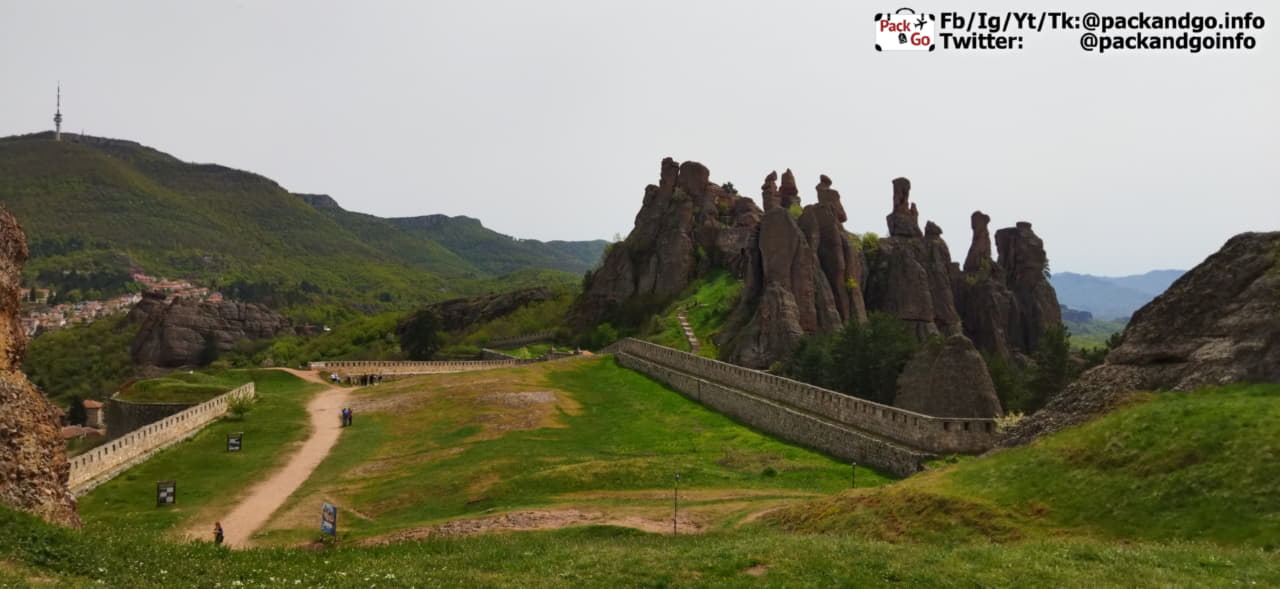
Many years later, in the 14th century, when the Belogradchik fortress was part of Bulgaria, Tsar Ivan Stratsimir, extended the fortress with fortified garrisons. The fortification was one of the best in Bulgaria at the time.
Sadly, even the best fortifications couldn’t resist the Ottoman (Turkish) invasion and in 1396, the fortress was captured. The Ottomans further expand it for their defensive needs.
What was the most interesting for us was the Belogradchik Uprising of 1850.
The Belogradchik Uprising of 1850, the first organized Liberation Movement of Bulgaria
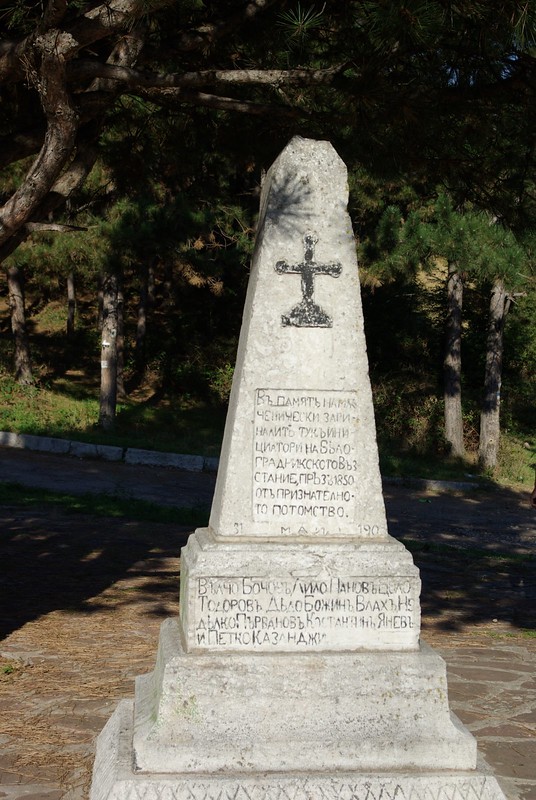
Finally, the dramatic story that you were all waiting for.
The year is 1850. The Ottoman Empire is in its downfall, there are many separation movements all across it, the Serbs were just one step away from being completely independent and Russia is threatening it constantly.
One peripheral part of the Ottoman Empire is exactly Belogradchik, Lom, and Vidin. Because it was a frontier, there were far more soldiers than in other parts. That brought big problems.
There were big clashes between the Bulgarian Christians, who lived there and those Muslim soldiers. The main issue was that The Ottomans took many lands of the Bulgarian villages illegally, and add taxes, far bigger than those of the Muslims, and that brought an economic burden to those Bulgarians.
Who likes more taxes? Not Bulgarians! They started to dream about a separation. They wanted another state, where they can have equal rights. They were looking at the Serbian neighbors with envy and inspiration.
The most important people of this region were Valcho Bochev, dyado Bozhin, Lilo Panov, Nedyalko Vlahat, Konstantin Yanev, Petko Kazandzi and Tzolo Todorov.
These guys started a rebellion union, which was gathering in Rakovishki monastery and planning the attack. It was the first Bulgarian liberation movement of the 19th century!
More than 20 years earlier than the April Uprising, the Belogradchik Uprising was taking shape!
They were in contact with many immigrants from Hungary and Poland that were hiding in Vidin at this time, taking ideas and planning.
They tried to find support both from Serbia and Russia.
The Serbians were saying they will help, but there were actions showing the opposite. They were sabotaging the movement in different ways.
The other ally didn’t help either. In 1848, Valcho Bochev and Lilo Panov managed to talk with Konstantin Nikolaevich, a prince of Russia. They ask for military help, soldiers, and actions! But the prince responded with a cold answer. “Show me that you really want to be free first, otherwise we won’t help you”.
The cold shower the Bulgarians received didn’t stop them. Even without help, the Bulgarians were not giving up. They wanted freedom! Even without the help of 3rd parties.
The organization of the uprising was going strong. There were many who wanted to join and help with money for weapons. Sadly, the economic situation didn’t help them to raise a lot of money.
The Bulgarians from Lom and Vidin were also helping.
After a while, they put a date for the uprising – 01.06.1850 (Spasovden)!
The crazy organization was going well. Everybody was joining the uprising. Things were going incredible. The number of participants was around 10 000 to 15 000 people.
They were strongly believing that it is the right moment. That the world will see how brave the Bulgarians are and they will help their battle for justice. Finally, Bulgaria will be free again, after almost 500 years of Turkish occupation.
And then, one day before on 31.05.1850, there was a fight between some of the Bulgarians and Turkish soldiers. The Bulgarians killed them. That made a lot of noise and the leaders of the rebellion got worried. They didn’t want the uprising to start before, because they needed to perform coordinated attacks in Lom first, then Belogradchik, and finally Vidin.
The news about the first death Turkish exited Baba Stoyna, the wife of Tzolo Todorov. She said to one of the Turkish soldiers that their end is coming and that his husband will lead the fight.
Bragging too early is never a good practice!
Of course, the Turkish soldiers didn’t wait a lot and arrested Tzolo Todorov, and all of his close allies like Lilo Panov, Valcho Bochev, Petko Kazadhi, dyado Bozhin, and more.
At that time, there were not so many educated people. Arresting all of the organizers left the Belogradchik Uprising without heads.
But that didn’t stop the Bulgarians. The arrest of those men triggered captain Krastyo to attack Lom with around 1000 Bulgarians. This attack failed and captain Krastyo was killed. Those who survived turned towards Belogradchik with their new leader Ivan Kulin.
In Vidin, a bigger group of 3000 Bulgarians, with the leader Petko Marinov, sieged the Vidin Fortress, where the Turkish were hiding. On 03.06.1850, the traitors Petko Nikolov and the priest, father Tzeko, told the Turkish how many Bulgarians are out there, and their equipment. The Turkish were better prepared so they decided to fight. Soon the Turkish soldiers killed many of the rebels and the rest escaped.
But the heaviest battle was in Belogradchik. The Turkish hid inside the Belogradchik Fortress. The siege was created by around 10 000 Bulgarians. The number was spectacular, but sadly they only had around 200 firearms. Some say that the firearms were even less. Not more than 50! They were eagerly waiting for the promised weapons from Serbian. Or help from Russia. The Russian soldiers were just on the other side of the Danube, and now, the Bulgarians proved already they are serious. Surly Russia will help.
But no, Russia didn’t.
Those rebels waited for the group of Lom to come and help with firearms, but sadly only a few soldiers came from there since Lom’s attack was unsuccessful.
The Turkish were stuck inside of the Belogradchik Fortress, without knowing the exact number of the Bulgarian rebels, and nothing about their weapons.
On 04.06.1850, an official message from Serbia came, banning any export of arms to the Vidin region. Serbian didn’t help with weapons, as it previously said, so most of the Bulgarians were fighting with agricultural tools.
Finally, after 6 days of siege, a big Turkish army came from Vidin. They killed many of the Bulgarians and destroyed many houses. The Belogradchik Rocks were covered in blood. It has been a massacre. Dead bodies were falling like autumn’s leaves. Firearms vs shovels. The Bulgarians had no chance to win without modern weapons.
But the few Bulgarian survivors had the last word. They escaped to Serbia and the mountains, and they vowed never to return to these lands. Leaving a poor region, that won’t provide tax money to the Ottoman Empire. The Vidin area became an empty zone, with a few small villages and minimum development.
Even today, the Vidin region was poorly inhabitable, and it is one of the worse economic areas of the whole European union.
The Magura Cave
The entrance fee to the Magura cave is 12 BGN (around 6 euros).
For students and pensioners, the price is 6 BGN (around 3 euros).
The parking cost is 2.40 BGN (1.2 euros) per hour for a car or 6 BGN (3 euros) per hour for large vehicles (buses, etc.). Last Updated Summer 2022.
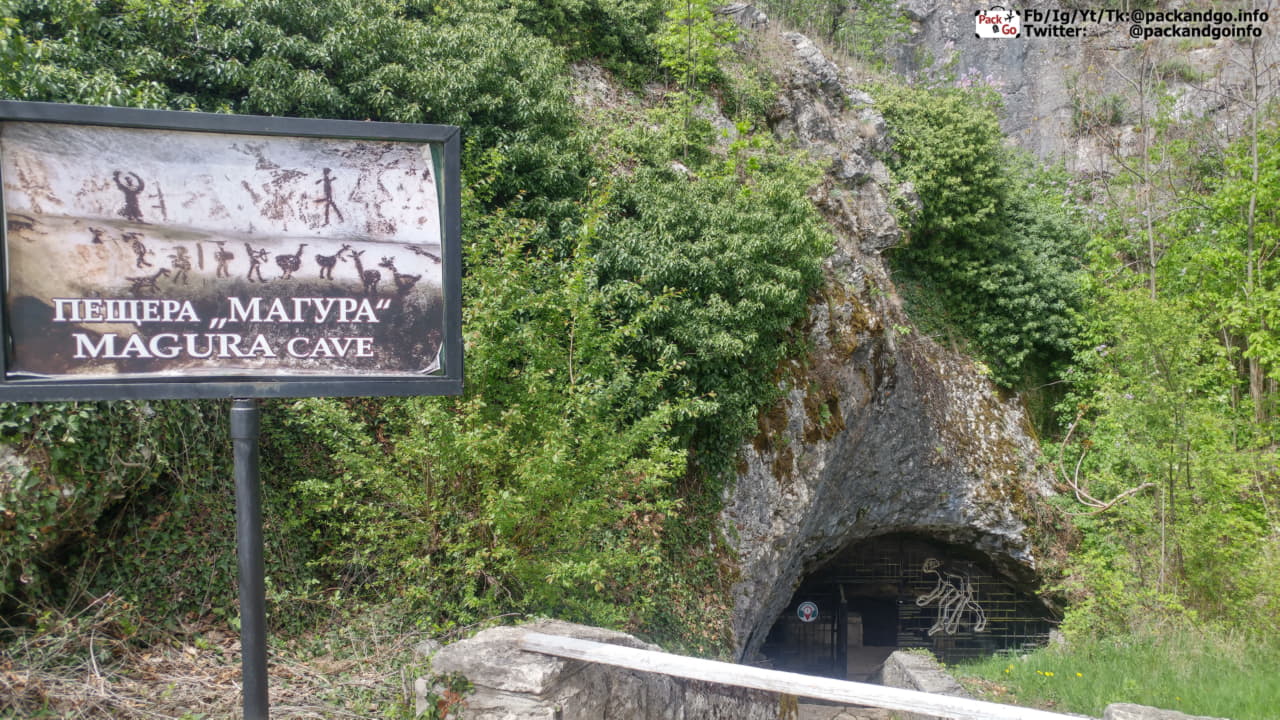
The Magura Cave is one of the best-known caves in Bulgaria. It is located around 25 km. north of Belogradchik, near the Rabisha village. What makes Magura cave so popular are the cave paintings. On the walls of the cave, there are cave paintings from the Epipaleolithic, Neolithic, Eneolithic, and early Bronze Ages. To say it in normal words, there are 10 000 years old cave drawings, which are one of the oldest cave drawings in the whole of Europe.
What these ancient people painted were hunting scenes, religious ceremonies, and different deities. And of course men with big… sticks in the middle.
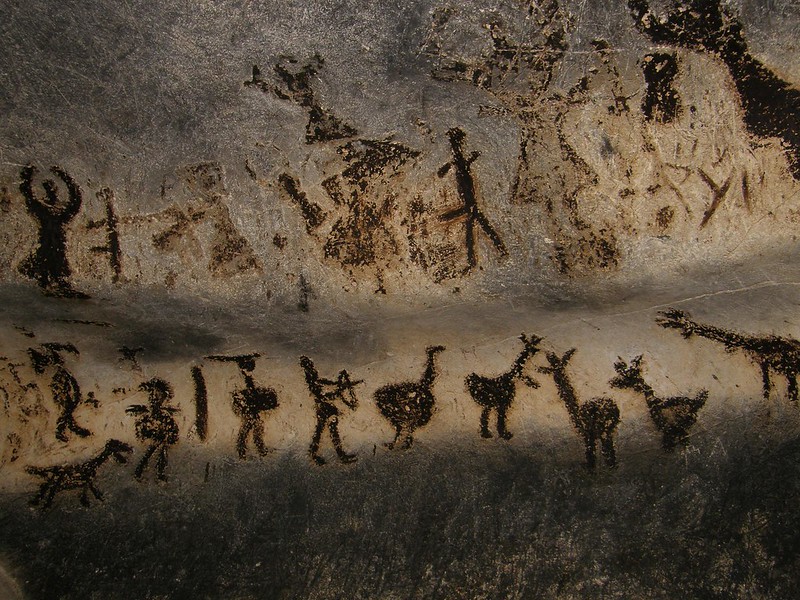
According to some Bulgarian scientists (Stoev and Muglova 1999), these old people used a solar calendar to count the days and prepare for religious celebrations. Something that nobody was doing at this time.
Apart from the paintings, the cave is massive. It is at least 2.5 km long and there are plenty of stone formations and many bats.
The cave is great, but there is one huge BUT. Since it became a protected heritage, access to the part of the cave painting is closed to the public. So you won’t be able to see a major attraction.
I managed to see them back in 2011, but probably only scientists will be able to see them in the future and that is sad. People say that it was closed because the heat that people were bringing to the cave was damaging the painting.
Also, the entrance to the cave is open only once per hour. If you miss the entrance hour, you need to wait until the next.
Honestly, I don’t recommend it already.
Belogradchik town itself
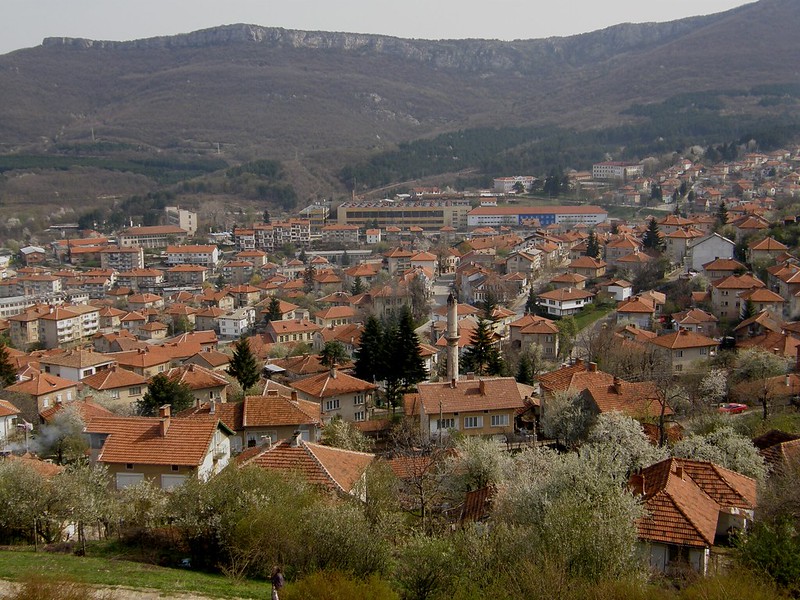
It is a small town, but you can find some nice accommodations at a very good price. What you can enjoy in the town is the little town square with various coffee shops and restaurants. There is a small museum – Belogradchik History Museum. There you can learn a bit more about the 1850 Belogradchik uprising and the history of the region. The entrance fee is 3 BGN (around 1.50 euros) for adults (above 18 years old) and 2 BGN (around 1 euro) for younger people (less than 18 years old)
What else to see around Belogradchik?
-
Astronomic observatory Belogradchik (1.2 km away). It is a part of the Bulgarian Academy of Science. The visitors to the observatory can see the night sky of Bulgaria, and learn more about stargazing in general.
-
Bashovishka church in Oreshets village (4 km away). Not really spectacular, but if you are a fan of medieval churches, why not check it out.
-
Bashovska Cave (4km away). It is a nice cave nearby.
-
Lepenitsa Cave (4km away). It is a part of the Belogradchik Rocks so it has the brownish-reddish color of the rocks.
-
Kozarnika Cave (6 km. Away). This one is the goat cave. It is 210 meters long. What is interesting about it is that there, a long time ago, cave people were living.
-
Venetsa Cave (14 km. Away). It is one of the newly-opened caves for visitors. The first tourists arrive in 2015. It is a really beautiful cave and it has light effects. There are 5 halls with a total length of 200 meters.
-
Bela Voda waterfall (23 km away). It is located on the river Stakevska. It is around 15-meter high. There is short trekking, that starts from Stakevtsi village and finishes at Bela Voda waterfall. It takes around 35 minutes by walking.
-
Rabisha lake (27 km away). It is located really close to Magura Cave. It is one of the biggest lakes in Bulgaria. You can have fun and even enjoy a boat trip on it. If it is warm enough, why not swimming too? Yes, it is not like a sea beach, but it is still very enjoyable.
What else to do near Belogradchik?
So, we gave you three great locations near Belogradchik, and even more in the surroundings, but there are more things to do here:
-
Fly with hot air balloons over Belogradchik Rocks.
-
4x4 safari ride near the Belogradchik Rocks.
-
ATV ride near the Belogradchik Rocks.
-
Boat trip with a Dragon boat on Rabisha lake
-
Horse ride and e-bike ride tour.
-
Hiking with a guide.
-
Eat Bulgarian food.
-
Drink Bulgarian drinks.
Check details about these activities in our article “Best things to do in Belograchik”.
What's next?
So, Belogradchik was a great destination, and even the small disappointment of Magura Cave didn’t leave a bad impression. Honestly, the Prohodna Cave(Eyes of God cave), and the Devetashka Cave were better, but never-mind. The area is awesome and you should visit it at least for a weekend, no matter if you are from Bulgaria, Serbia, Romania or another country.
From here, we are heading towards Vidin, and then we will cross the border to Orsova (Romania) on our trip towards Budapest (Hungary).
Follow us and see many new cool destinations.
| Follow PackAndGo.info at: | |
| YouTube | @packandgo. |
| @packandgo.info | |
| X | @packandgoinfo |
| Bluesky | @packandgo.bsky.social |
| @packandgo.info | |
| TikTok | @packandgo.info |
What you can see around?
If traveling around north Bulgaria is your jam, don’t miss Lovech, Lovech surroundings, and Dryanovo too. There are many interesting places in Bulgaria!
